Reconnaissance-in-FORCE--Not Farce
By Mike Sparks
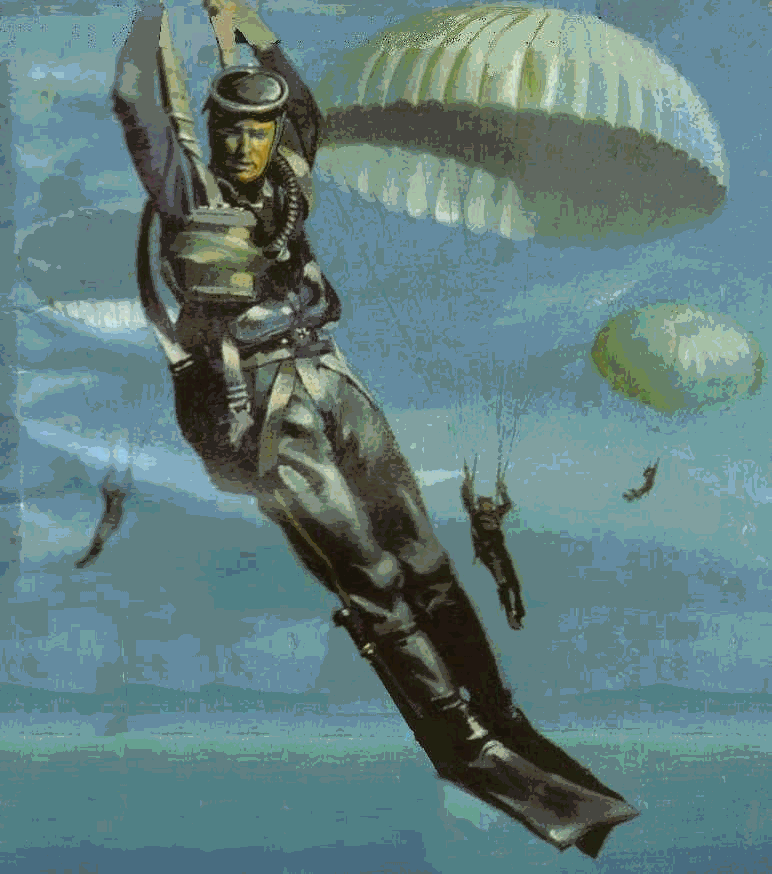
Napoleon
When former British Naval Intelligence Commander Ian Fleming wrote his James Bond 007 novels, they were based on FACT having first done the necessary "reconnaissance" as WW2's leader in British military intelligence. Fleming would also create the character of Napoleon Solo for The Man from U.N.C.L.E. TV show with hidden meanings pointing to the real Naploeon's opposition yo the rule of the Rothschild Illuminati.
Commander Fleming sent many men out on reconnaissance missions of the German enemy to gather information about what they were doing so better to direct combat forces to defeat them. He did an excellent job of directing his own intel-gathering commandos, 30 Assault Unit (30 AU) gathering an immense amount of secrets many of which are still closely guarded today after 60+ years--while losing few men.
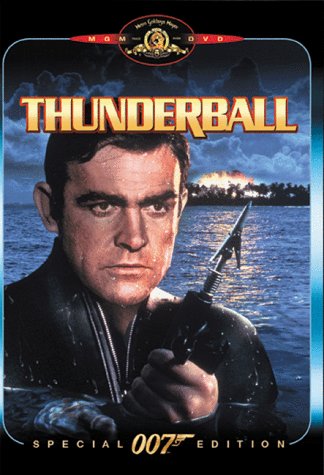
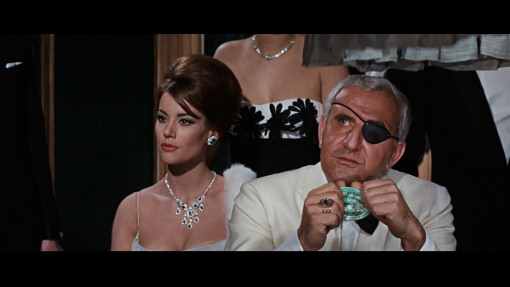
His fictional character, secret agent 007 James Bond is a defacto cavalry scout/recon man--but not in FORCE as a military unit should be. I'm sure after reading many a 007 book or watching a film you surely might have asked, why didn't the authorities the minute they suspected a conspiracy from a Dr. No or a Largo flood the place with troops and tanks--a recon-in-force--and not have Bond and his companions suffer in so much distress? You could glibly say, that'd take the fun out of it, but that's not true; the whole point of Bond and his helpers doing the initial recon-in-stealth was to get the CERTAINTY required to send in a recon-in-force that could wade into the problem and demolish the enemy's plans. In Thunderball: the book, Bond and sidekick Feliz Leiter agonize while doing an aerial recon by seaplane over whether they are sure enough that SPECTRE Number 2 man Largo has the nuclear bombs to justify dropping an Airborne division of Paratroopers on the island or to dispatch the nuclear attack submarine the USS Manta to defeat his frogmen and their mini-submarines.
 youtube.com/watch?v=0GXFKZWtDJw
youtube.com/watch?v=0GXFKZWtDJw
In Thunderball: the movie, Fleming and the screenwriters merge the two options into PARASCUBA frogmen being dropped from a KC-97 tanker/cargo plane into the water to battle Largo's mini-submarine divers who were transporting a stolen nuclear bomb.
Recon-in-Stealth is Inherently Weak
In Dr. No; both book and film show the dilemma of using small boats to insert a recon-in-stealth (RIST) team; what do you do with them after you land? Do you try to hide them? What if they are found and the enemy destroys them, stranding you?
In Dr. No, the small boat Bond and Quarrel use to reach Crab Key is detected by a Dr. No motor gun boat, resulting in their whole mission being "compromised"; the entire enemy forces were alerted and eventually kill/capture the pedestrian Bond/Quarrel/Ryder party by surrounding and overcoming them with a motorized vehicle more mobile than them with a flame-thrower.
Even if the RIST team is undetected, it simply may not be able to fight against the surf to make it out to see to get back to the mother ship, seaplane or base. In 1942, General Mark Clark's party went ashore from the submarine HMS Seraph onto North Africa to confer with sympathetic Vichy French officers only to almost not make it back due to the rough surf.
Details:
Raider Battalion creator, Colonel Evans Carlson's force on Makin Island was not so lucky; several men couldn't get their boats out of the surf zone and were captured and beheaded by the Japanese giving his bureaucratic enemies who want the USMC to be an inept little army of lemmings the excuse they needed to disband the unit. So now America doesn't have a Force Recon that Fights due to weakling marine borg bureaucratic ego that doesn't want to be either commandos or a competent army--so it does neither!
Details:
www.combatreform.org/britainpioneeredamphibiouswarfareNOTtheUSMC.htm
Many amphibious reconnaissance units are opting for SPEED instead of stealth--which is a fatal approach only gotten away with because no one is shooting at them for the most part. Recon-in-Speed (RISP) using small boats overcomes the surf zone struggles by engine power but at the expense of noise/complexity that might bring on far worse problems--like the entire enemy alerted and converging on you. The WW2 British had a better grasp of this area by its fantastic flat-bottom Landing Craft Assault (LCAs) that were both armored and visual and radar stealthy; but "slow" at 10 mph. Its seems logical that a modern, FAST LCA with 30+ mph speed and stealth is what's required to get recon RIST and raid RISP forces ashore--if there are no sea mines. Regardless, the FAST LCA will have to turn around and loiter off-shore or in a mother submarine or seaplane leaving the RIST team stranded ashore since it'd be too big to beach and hide and hope to relaunch back through the surf etc. The inept USMC has learned the hard way that hard shell and heavy Boston Whalers are not easily relaunched back into the surf.
Kayaks
 youtube.com/view_play_list?p=B4EA2CAB24A26BE6
youtube.com/view_play_list?p=B4EA2CAB24A26BE6
Many elite special forces use 2-man paddled folding kayaks to be easy to transport then erect to cut through the surf zones; the most famous raids being the Cockleshell Heroes mission in 1943 (see videos here)
 youtube.com/watch?v=O-v-YKpvnGQ
youtube.com/watch?v=O-v-YKpvnGQ
...and the Operation JAMES BOND rescue of Martin Bormann in 1945 by Lieutenant Commander Christopher Creighton and Commander Ian Fleming. Kayaks cannot be erected while in the water like a rubber boat can be inflated ("limp duck") but can be already assembled and dropped from aircraft wing racks with just a small stabilizing parachute for parafrogmen with fins to jump into the water and get inside them. Once ashore, kayaks can be hidden or better yet flooded and sunk in the surf zone until needed for exfiltration. Fully inflated rubber boats ("rigid ducks") are very large and impractical to carry under aircraft wing racks without severe aerodynamic drag penalty so they invariably are delivered by large transport planes with a flight profile that gives itself away as a SEAL team insertion. It seems clear what is needed is an electric or diesel engined stealthy powered submersible kayak.
 youtube.com/watch?v=iKfKTAM20Oc
youtube.com/watch?v=iKfKTAM20Oc
Another group that made excellent use of submarines, mini-subs and kayaks was the Combined Operations Pilotage Parties (COPP)--a sort of amphibious version of the Airborne's PATHFINDERS that acted as recon and as spearheads for larger force landings.
 youtube.com/watch?v=DnhfYbFzTno
youtube.com/watch?v=DnhfYbFzTno
Bicycles
 youtube.com/watch?v=pkRaE3UEags
youtube.com/watch?v=pkRaE3UEags
To give the RIST team a mobility differential on land, the old commando technique of using folding all-terrain bicycles (FATBs) should be brought back into use. FATBs can be carried on board even small landing craft or jumped attached to the commando himself!
combatreform.org/militaryvehicles.htm
Fat-tire FATBs could have given a Bond/Quarrel/Ryder enough speed to stay ahead and away from Dr. No's men and flamethrower tank to avoid capture, return back to base--assuming their kayaks were not captured--to direct the raid force to finish off the underground base.
Recon-in-Force: We Must Be Able to Fight For Reconnaissance
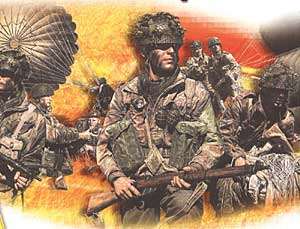
Having proposed all the following RIST and RISP means, the fact may be that the enemy may at some point still detect you despite your best efforts. Should we then go home and pack our bags so to speak?
This is EXACTLY what happens today if an USMIL recon mission is "compromised"; we had Army MACV-SOG teams running for their lives from NVA "head hunter" battalions in Vietnam; SEAL teams today in Afghanistan surrounded by Taliban rebels with AKMs and RPGs and resorting to E &E. Even British SAS Team Bravo 20 helicoptered-into desert open terrain Iraq on foot and was forced to flee when its hide site was compromised. Again, Fleming offers us answers. In his short story, "A View To a Kill" he has a Russian recon team picking off motorcycle dispatch riders from a well-camouflaged hide site. He earlier offered us the swamp-mobile tank in Dr. No. Combine them together and you get the stealthy hybrid-electric drive, armored amphibious tractor AKA amtrack--which we can create today by using M113 Gavins and giving them ARIS SPA water jet kits. These "AmphiGavins" would be able to parachute or drive off from VTOL/STOL/ESTOL seaplanes/aircraft/helicopters or from battleships, submarines into the water to give us a Recon-in-Force (RIF) capability.
AmphiGavin video
 youtube.com/watch?v=1hbUusptJbs
youtube.com/watch?v=1hbUusptJbs
If the RIF Team encounters a "Dr. No" motorboat or helicopter, it can destroy it with stabilized 30mm autocannon fire or a guided missile--just like Roger Moore and Barbara Bach exploding the Bell Jet Ranger helicopter pursuing them in movie, The Spy Who Loved Me--without incinerating a lovely, busty pilot inside. They were able to continue with their RIF despite enemy operation--which is something we must be able to do if we want to see what the enemy is doing. Even more importantly, light mechanized RIFs can fly over and avoid sea mines entirely if they are to do missions inland. If we let our "eyes get poked out" by mere guards with garden-variety AKMs and RPGs we will not be able to ascertain what the enemy's high value targets are let alone what they are being used for. This idea that we can paint an intelligence picture just from what the enemy permits us to gather unwittingly in naive and dangerous. Sometimes we have to be able to fight for reconnaissance. The disastrous Dieppe raid in 1942 might be viewed as a bad example of doing this, but that was corrected 2 years later with the outstanding D-Day landings on the Commonwealth beaches using General Percy Hobart's "funny" sapper tanks to overcome beach and enemy obstacles.
www.combatreform.org/sappertanks.htm
Tracked Weasel swimming
We know for a fact that Fleming's counterpart, SS Commando leader Otto Skorzeny used tracked, armored tanks on several special missions in WW2. Operation PANZERFAUST is described below. Notice his male sex organ didn't fall off because he used tanks in his special operation.
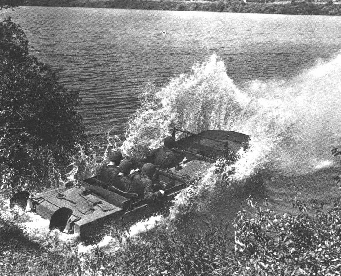
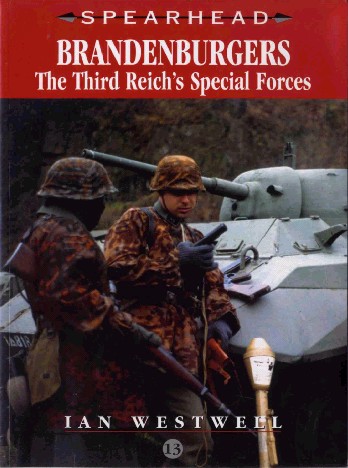
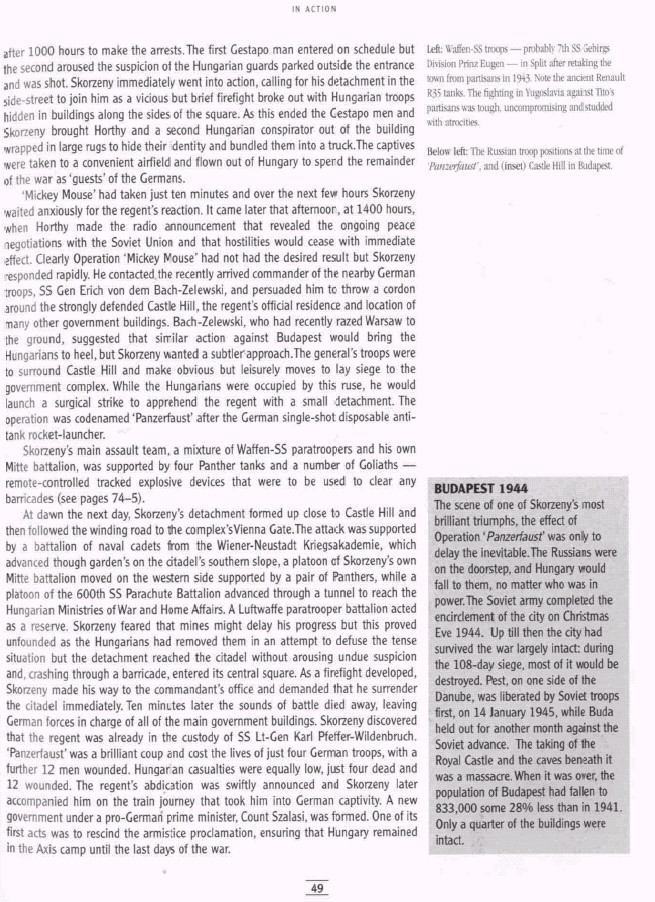
The British Hamilcar heavy glider-landed Tetrarch and Locust light tanks with machine guns and 37mm guns twice to enable successful Airborne operations in 1944 and 1945, but failed to do so in-between and lost the Arnhem battle, tragically prolonging the war. PIKE Force was to parachute airdrop M29 Weasel tracked amphibious, over-snow vehicles from underslung bombers for special operations in Norway--but didn't get the chance due to RAF "air power" zealots wanting to Douhet "strategic bomb" civilians into submission.
Weasel Parachute Airdrop
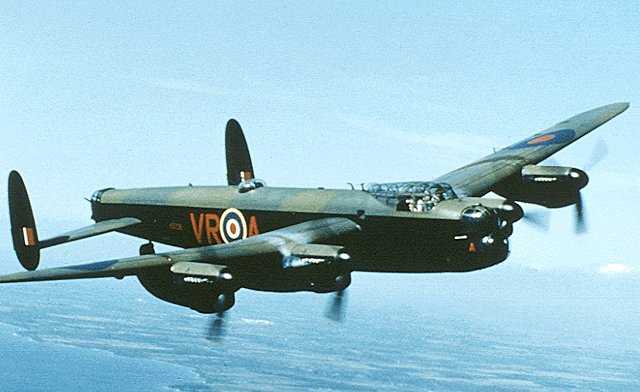
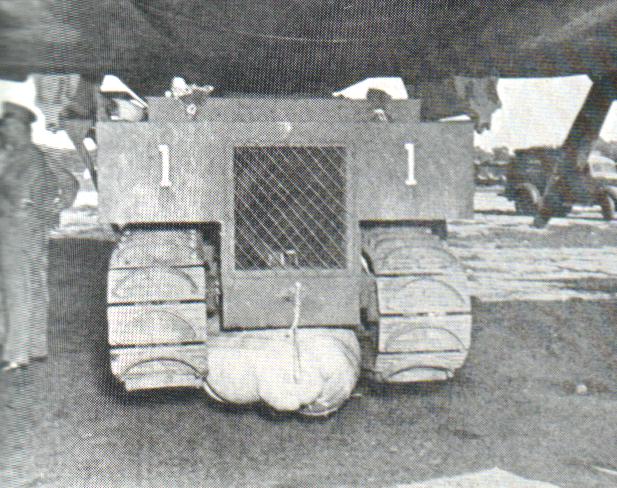
Dangerous Missions: Weasel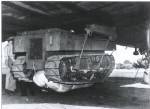
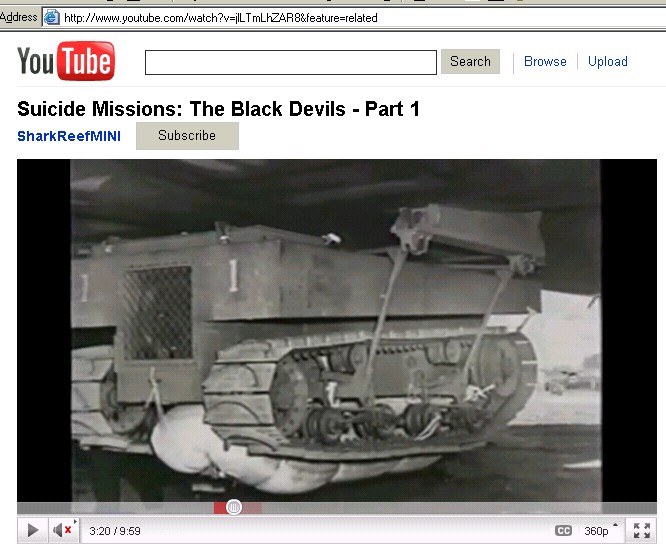
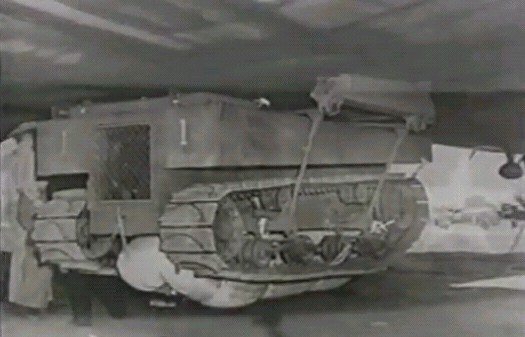
The British Lancaster Bomber was allegedly the "only" aircraft capable of transporting the Weasel into Europe. This is a dubious conclusion since B-24s, B-17s and Halifax bombers were available and capable of carrying the weight of a Weasel. If the RAF didn't want to support SOE, then perhaps the U.S. AAF would. RAF Bomber Command's lack of support for the project has been cited by some as a reason for the cancellation of Operation PLOUGH. Bomber Command had a limited number of Lancasters and therefore "could not" support this operation. Once Operation PLOUGH was cancelled, the Weasel continued to play an important role in the history of the 1st Special Service Force.
 youtube.com/watch?v=jlLTmLhZAR8
youtube.com/watch?v=jlLTmLhZAR8
execulink.com/~kiska/weasel3.jpg
http://en.wikipedia.org/wiki/M29_Weasel
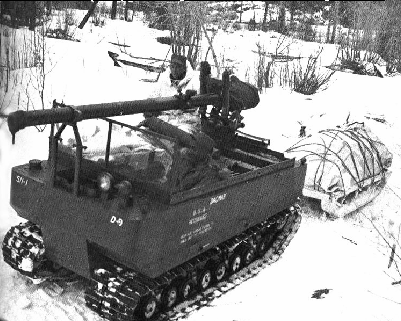
M29C Type A: Center-mounted M20 recoilless rifle 75mm on Weasel [2]
M29C Type B: (T106) Rear-mounted 75mm recoilless rifle on Weasel
M29C Type C: Center mounted
The following describes how Weasels were parachute dropped, but note the 1950s airdrop technology lacked the canopy-release mechanisms we have today that prevent loads from being dragged by the wind upon landing.
mccullyweb.com/icefield/flyingweasels.html
Camp 10, Juneau Icefield 1951, "FLYING WEASELS"
The next winter much consideration was given to the possibility of barging them to the head of the Taku Fiord and then driving them to the Icefield via the Norris or the Taku glaciers from tide water. But a veritable moat of crevasses around the edge of the area made all routes unsafe even after the heaviest snow falls. Thus this plan too had to be abandoned.
Any hour later the plane returned with the second Weasel. Again each parachute billowed out, and the huge load drifted gracefully through 1,500 feet of space to land right side up on the snow and in perfect condition. But a strong down-glacier wind had developed at the 3,700 foot level and suddenly the metal-lined pallet board with its attached mattresses all tied to the base of the Weasel to cushion its fall, became a sled. In the strong wind, neither of the chutes would collapse. The vehicle, pallet board and all, was dragged rapidly down slope toward a maze of crevasses
It began to look as if one of our Weasels was not going to be successfully flier after all. Members of the Expedition, who were on skis, raced after the wayward vehicle. But they were unable to catch up with it. Closer it rushed toward the crevassed area, one and one-half feet every second.
Story Taken from APPALACHIA Vol. 29, No. 1 pp.120-123
By Maynard M. Miller
A "weasel," to most of us a small furry animal and it does not fly. A "weasel,"to any JIRP*, is the affectionate name for the Army's over-snow vehicle, M29-C, and in Alaska in 1951 it did fly. This is how it happened.
Two years ago a pair of over-snow vehicles was provided to the Juneau Icefield Research Project by the Army for test on sub-arctic ice surfaces. We hoped that their use would greatly facilitate our program by aiding us to reach out-laying camps, for the transport of heavy equipment, etc. In planning remote-area expeditions, one of the most serious problems always is the delivery of food and equipment for the scientific work anticipated and for reducing the many time-consuming house-keeping details of live on an "Icecap." We were extremely fortunate in that the U.S. Air Force's Tenth Rescue Squadron in Alaska was interested in extending its training and experimental program at the time that we started our scientific program on the Juneau Icefield. Thus we have been provided with the best of aerial support and upon this airlift the scope of our Project has been planned.
The first attempt to fly the Weasels into the Icefield was made in the summer of 1950. One of the vehicles (each one weighted 5,000 pounds) was completely dismantled in an effort to fit it into the fuselage of our supporting ski-wheeled C-47. It was a heartbreaking discovery, at the end of all this specialized labor, to find that it was impossible to get the largest piece into the plane. It was TWO INCHES too long, and could not be broken down into smaller components.
And so in 1950 there were no Weasels flying to the "Icecap."
In the summer of 1951, we again attempted to fly the Weasels. Through the interest of General William Olds, Commanding General of the Alaskan Air Command, hope was revived. From the 54th Troop Carrier Squadron at Elmendorf Field came a C-82 Flying Boxcar. With the aid of a crew from the 925th Engineer detachment, also from Elmendorf Air Force Base, we were going to attempt to parachute these two and one-half ton vehicles to the main central camp near the center of the field. Only once before, to my knowledge, had such a drop been attempted. This was in February 1951, as an experiment at the Army Test Center at Big Delta, Alaska.
Two G-11 parachutes were attached to each Weasel. Each chute was 100 feet in diameter and the two capable of carrying 6,000 pounds, The first Weasel was shoved on rollers out of the plane, the chutes opened beautifully and glided the vehicle successfully to the ground. Immediately some of the members of the Project unleashed it, put in the battery and drove it off.
Fortunately, the first Weasel had been put in operation within half-an-hour of delivery. It was therefore quickly brought into use. Going at thirty miles and hour, it finally overtook the "sled," but not before it had been dragged more than a mile.
In the meantime, the pilots, seeing the dangerous situation, had flown low over the machine, buzzing it, and succeeding in partially collapsing the chutes with the propeller-wash of the C-82. The first Weasel was then jammed in front and thus brought it to a halt.
In the succeeding few weeks, these machines greatly aided the efficiency of our field party. Where before it had taken a party on skis a full day to reach an outlying camp, the same distance could now be covered in two to three hours by the flying Weasels.
*A member of the Juneau Icefield Research Project, sponsored by the American Geographical Society and the Office of Naval Research, which in late summer of 1951 completed its fifth season of scientific investigations on the Juneau (Alaska) Icefield.
Weasel used by the 82nd Airborne during the Battle of the Bulge in 1945
Instead, the American 82nd Airborne under then Major General James Gavin used Weasels to hold off the German counter-attack by resupplying ammunition and evacuating casualties in the "Battle of the Bulge". Earlier, British SAS and French SOE resistance units dropped gun jeeps from British bomber bomb-bays. It's a peculiarly American prejudice to not use tracked armored vehicles for Airborne/Special Operations derived from its malignant narcissist culture that is professional incompetent and ignorant. At times, enlightened pros like a General Thurman or Stiner will over-ride light infantry narcissism and get decisive victories like in Panama using light tanks:
combatreform.org/lighttanks.htm
However, without inspired and competent leadership, the "light mafia" invariably reverts back to narcissism and foot-slogging.
The Absurd Dune Buggy Mentality in U.S. Airborne/Special Operations
In the beginning, U.S. Airborne/Special Operations units were hard-pressed to have vehicles--let alone armored ones--for operations due to limitations in aircraft payload. Extensive research has shown however, that even in WW2 with piston-engined planes, light tanks and armored infantry carriers WERE available for air transport by Hamilcar heavy gliders towed by powered aircraft.
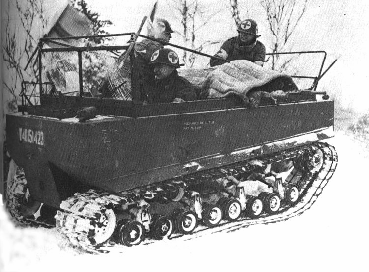
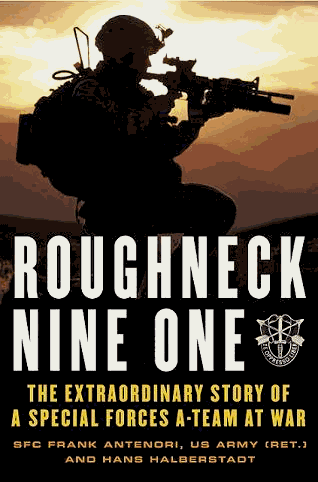
 youtube.com/v/vWjQ7yPJtaA
youtube.com/v/vWjQ7yPJtaA
After WW2, the British realized they had a winning combination with Hamilcar gliders and light tankettes and wanted an improvement over the open-top Bren gun carrier. The Oxford likes very much like a miniature M113--a Mini-Gavin
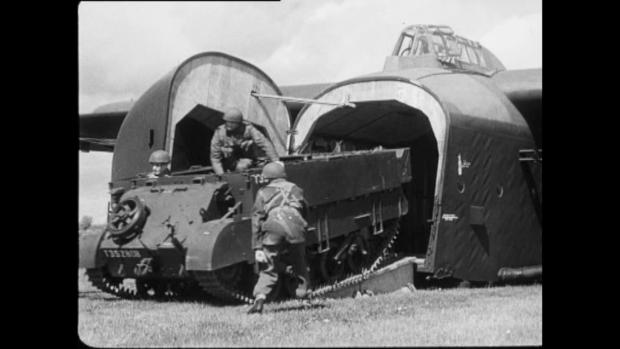
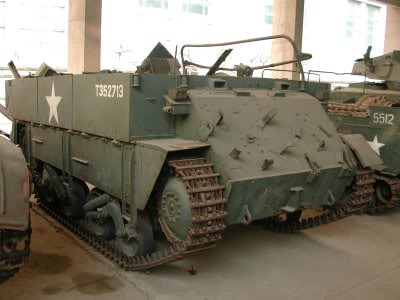
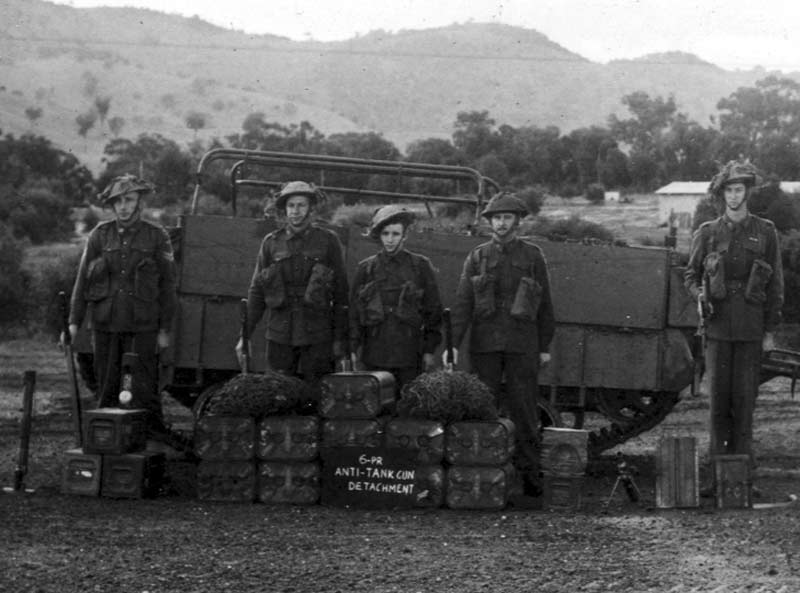
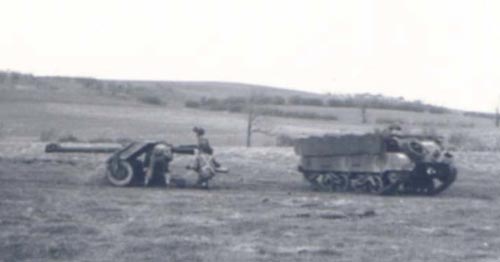
oldcmp.net/Oxford.html
oldcmp.net/oxford2.html
mapleleafup.net/forums/showthread.php?t=2610
oldcmp.net/beijing_1.html
The article below was written by Mike Cecil, a senior curator at the Australian War Memorial.OXFORD and CAMBRIDGE: The Australian Connection
During the latter half of the 1940s, the Australian Army certainly had the intention to supersede the 909 LP2A Carriers then in service with a more modern and effective carrier. The Oxford Mk1 Carrier was indeed imported for evaluation purposes in the late 1940s as a possible replacement. While the detailed results of that evaluation have not yet come to light, what is known is that the LP2A Carrier was considered by this stage to be only useful for training. This was further reinforced during the early stages of the Korean War, where the "...use of Carriers MG (Aust) No.2A in the Korean War proved conclusively that it was not suitable for the role of an MG Carrier in modern warfare" Simply, the Australian Army were looking for a modern Carrier to replace the now obsolescent LP2A Carriers of World War 2 vintage, and the Oxford was a possibility. The Oxford, while more modern than the Australian LP2A, was a late-war development which, by 1949, was about to be superseded by an even more modern Carrier, the Cambridge or, "Carrier, Tracked, FV401". The FV401 was first proposed in 1946 and by the late 1940s when the Oxford Carrier was brought to Australia, the pilot model Cambridge Carrier was nearing completion in the United Kingdom. The Cambridge Carrier was far more advanced than the Oxford. It was to utilise independent torson bar suspension protected by armoured skirting, had a better internal crew layout and greater overhead armoured protection. The rear-mounted engine was the powerful Rolls Royce B80. In all, the prospect of replacing the LP2A with Cambridge Carriers looked very promising. Hence, the Australian Army decided to await developments with the Pilot Model Cambridge. On 9 November 1951, approval was given for the procurement of 482 vehicles as replacements for the LP2A Carriers . It was anticipated that the vehicle would be the FV401 Cambridge Carrier, and advice was received from the United Kingdom that, once a firm order was placed, this number would be included in the scheduled production in the United Kingdom. Delivery was expected to commence in late 1953, so there was nothing to be gained by procuring the older Oxford Carrier in the interim: the LP2A would suffice until the Cambridge became available. It was for this reason that only one Oxford Carrier, assigned ARN 153953, was brought to Australia. Several references, particularly during 1952, indicate that defence planning in relation to carriers was predicated upon receipt of Cambridge Carriers. But events in the United Kingdom changed this, as the FV401 was not developed beyond the pilot model stage. Developments in the UK and elsewhere during the mid-to-late 1950s also changed the basic carrier from an open-topped, top-entry and exit vehicle to a more combat capable, fully-enclosed vehicle with rear entry and exit. In the United Kingdom, this was to become the FV432 APC, while the Canadians were developing the ill-fated XC1 Bobcat APC and the United States were working on what was to become the very successful M113 [Gavin] APC. The abandonment of production of the Cambridge coupled with the developments in fully-enclosed carriers delayed the procurement by Australia of a tracked replacement for the LP2A. While the LP2A went out of service in the mid-1950s, it was largely replaced by wheeled vehicles: the Ferret scout car and Saracen wheeled APC. It was not until nearly 10 years later, in early 1965, that Australia received its next tracked APC: the M113A1 [Gavin]. How different it may have been in Australia if the Cambridge Carrier had gone on to production!
General Gavin's Paratroopers used armored jeeps and even mounted a pair of 2.36" bazooka rocket launchers on them; landed by smaller Waco CG-4 gliders. Unarmored jeeps were dropped by parachute to OSS/SOE/Jedburgh teams from RAF bombers.
That air-transported Task Force Smith years later in 1950 did not have M24 Chaffee light tanks from a separate armor unit that was a part of its parent unit, the 24th Infantry Division to combat Communist T34/85 medium tanks with their 75mm guns, This was criminal negligence on their part, a negligence based on NARCISSISM. Narcissism in the U.S. military manifests itself in various forms. TF Smith suffered from foot-infantry hubris created from earlier fighting the low technology Japanese who did not have very many tanks. However, Airborne/Special Operations have a hubris that they are better than "regular" units and will absurdly do stupid things rather than LOOK like the people they smugly feel superior towards. That they use vehicles at all is only because of the British LRDG example of using gun trucks and jeeps to do long-range raids beyond what men on foot could march to in 100 degree deserts against weakly-defended, Axis air bases in WW2. These British exploits were stolen and fictionalized into the American adventures in the TV show "Rat Patrol" in the 1960s.
 slideshare.net/1st_TSG_Airborne/lsn20-korean-war-tf-smith-inchon
slideshare.net/1st_TSG_Airborne/lsn20-korean-war-tf-smith-inchon
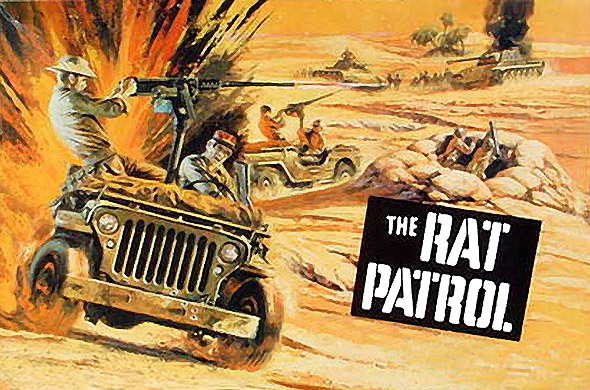
However, don't be surprised when U.S. Airborne/Special Operations get the chance to foot-slog, they will!
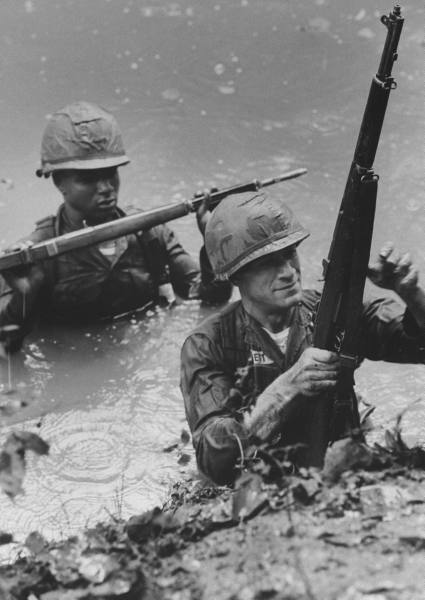
...and disaster often follows like Cisterna in 1943, TF Smith in 1950, Blackhawk Down! in 1993 where had they taken available light tracked armored tanks like Bren gun carriers or M113 Gavins they could have maneuvered in the face of enemy fire--and not been pinned down and surrounded. The absurd idea that all foot-infantry needs to fight enemy tanks or not be pinned down by enemy fires is athleticism and a bazooka--has failed repeatedly--but they persist in refusing to light mechanize now using "guided missiles" as their latest crutch. SFC Antenori in Roughneck Nine-One writes about how his SF unit in 2003 in unarmored Humvee trucks (they lie and call them "Ground Mobility Vehicles", a typical narcissistic con job) was attacked by an Iraqi Army company with medium tanks and light tracked infantry carriers--but defeated them using $78, 000 each Javelin missiles. Had the Iraqis competently dropped bursting high explosive artillery first on the American Green Berets, their ammunition-laden, unarmored trucks would have exploded and they would not have been able to leisurely take aim with guided missiles. Against a competent enemy who combines his arms, any recon or raid unit in unarmored trucks is going to be devastated if found. This was the whole lesson from Kasserine Pass in 1943 where our M3 White scout cars failed us miserably. Yet, the myth persists that these super Soldiers will somehow "see" the enemy first and defeat his enemy tanks operated by lesser Soldiers by direct fire marksmanship skill. What happens if like at Kasserine, the enemy refuses to play and drops mortar and artillery shells on you first? Your super gunslinging doesn't even get a chance to come into play. Look at the Rat Patrol artwork. It shows a .50 caliber heavy machine gun being direct-fired towards a German tank when the truth is that it wouldn't damage it at all. Yet, over 60 years later, American mounted recon units are still doing the Rat Patrol thing--with the same .50 caliber heavy machine guns subject to the same battlefield defeats like a Blackhawk Down! or a Cisterna--that is if they even show up to do the mission.
If you examine Antenori's book closely you will see him constantly--and correctly--complain about the vulnerability of his unarmored Humvee trucks full of fuel and ammunition. He also cites how his men got the mission in Northern Iraq in the first place---he had to reject an earlier mission to recon an airfield suspected of being used to fly out Saddam's alleged Weapons of Mass Destruction (WMD) materials BECAUSE THEY COULD NOT REACH THE AREA DRIVING THROUGH WADIS IN THEIR HIGH GROUND PRESSURE WHEELED TRUCKS.
Mission Not Accomplished.
Mission Not undertaken.
FAILURE a result of poor force structure and equipment damning them to not have the REQUIRED CROSS-COUNTRY MOBILITY.
What his men needed and Airborne/Special Operations forces still need today are LIGHT, ARMORED TRACKS with CROSS-COUNTRY MOBILITY AND BAND-TRACKED STEALTH.
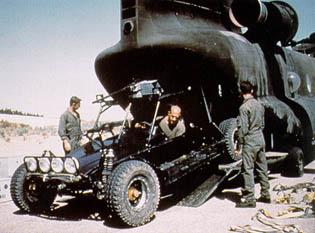
The USN's SEALs have Chenoweth "Fast Attack Vehicles"--AKA dune buggies yet you don't see them running around land-mine strewn Afghanistan in these metal frameworks with engines and fuel tanks, so they foot-slog. In one famous case, the enemy Taliban detected the SEAL recon team and swarmed them, forcing the SEALs to run for their lives with only one man surviving and one of the deceased earning the Congressional Medal of Honor. A far better outcome would be for all of the SEALs finishing the mission ALIVE and perhaps winning lesser medals or no medals at all. Speed from a dune buggy isn't going to help you evade a LAND MINE THAT IS ALREADY AHEAD OF YOU WAITING FOR YOU TO DRIVE NEAR IT.
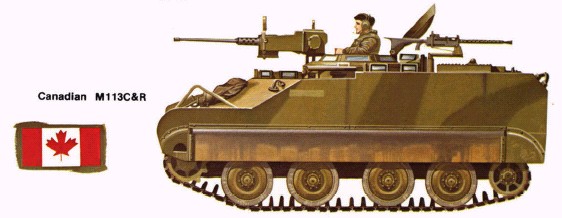
What is needed is a 4-roadwheel version of the M113--a "Mini-Gavin" that can roll on/off from inside CH-47 Chinook and larger aircraft to include parachute drop to do recon and raid missions in FORCE. Fitted with waterjets, Mini-Gavins can swim to shore with 6 mph power compared to the 3-4 mph drive from just their tracks. We first fitted water jets to Gavins in 1968; and they are available now from the Italian company ARIS SPA; hence making them into "AmphiGavins". Fitted with band tracks for stealth and a "V" hull bottom to deflect any land mine blasts not avoided by cross-country mobility, AmphiGavins would be the ideal recon/raid vehicles.
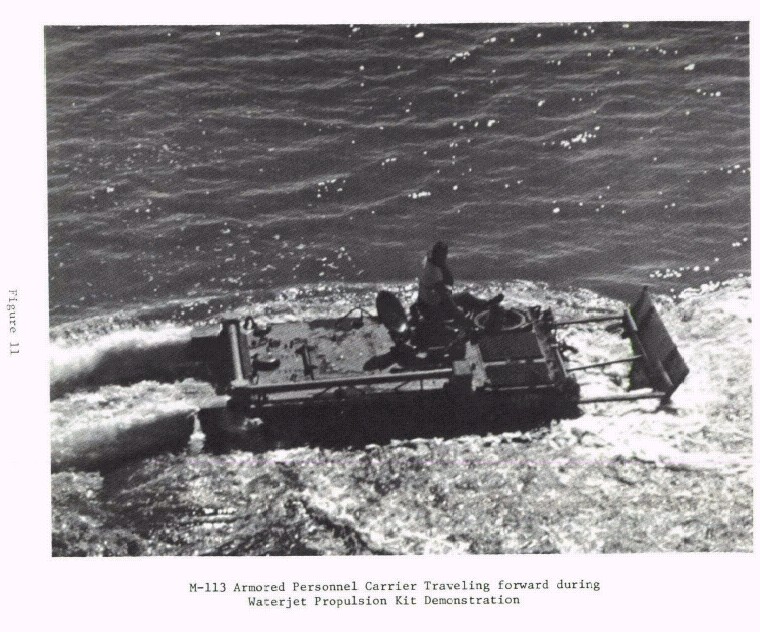
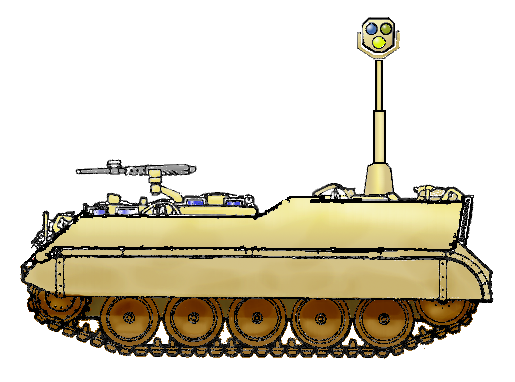
Above is Phil West's "Terrier" Mini-M113 Recon Vehicle, for more details:
During the Vietnam war, M113 Gavins were used for amphibious recon/raid missions moving from ship-to-shore for short distances even with just their tracked water propulsion. The 1963 Army ACTIV report states:
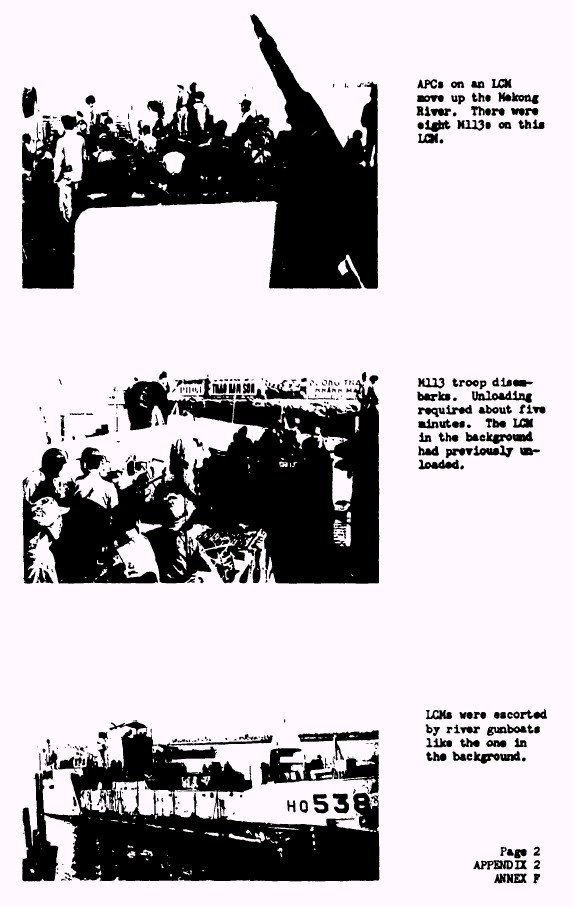


Other lessons learned from M113 Gavin Armored Cavalry experience was to have their own observation/attack aircraft owned & operated by them. A recon/raid unit could easily carry their own hand-launch UAV to achieve this purpose on a small scale.
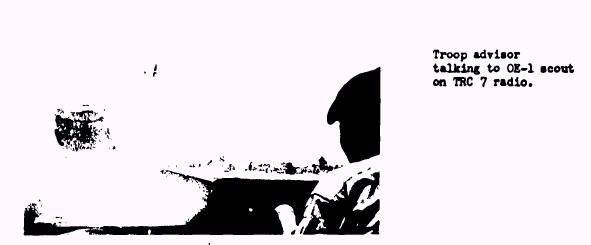
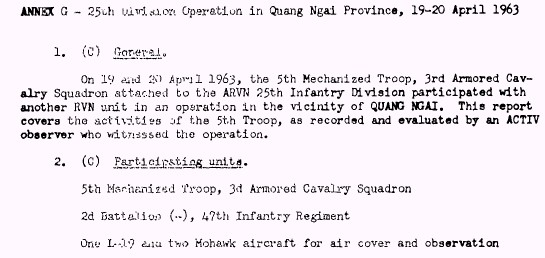



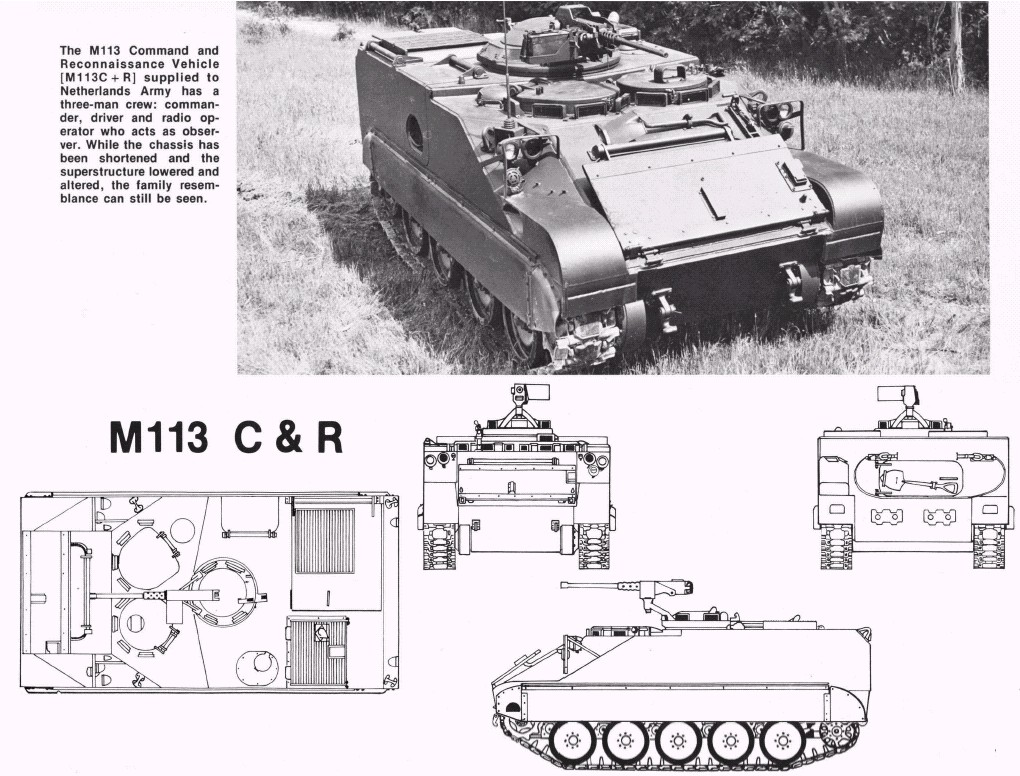
What About Mechanized Infantry and Armor Units? They earn Their "P" Name
60+ years later, we are still using wheeled gun-jeeps and armored cars and getting creamed daily in "Blackhawk Down!" type incidents that could have been prevented in the first place had Airborme/Special operations forces had their own light tanks. The question has to be asked, why don't heavy units offer to pitch in? Why don't they want to play with the lightfighters?
In fact, this is the very question I asked in the January-February front cover article of U.S. Army ARMOR magazine in 1995:
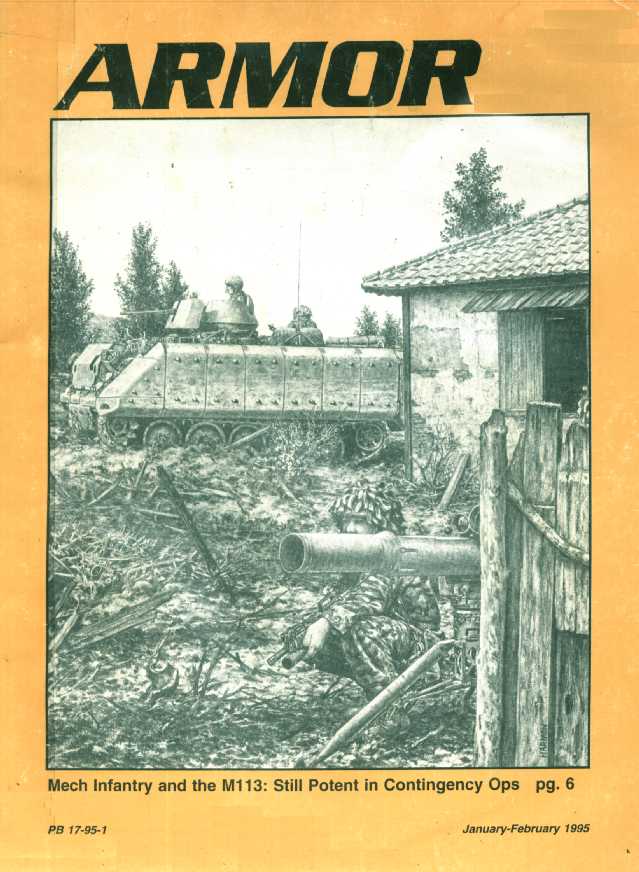
The answer from my North Carolina Army National Guard 30th Infantry Brigade was utter cowardly bullshit: even though they had (and still have) M113A3 Gavin light tanks to offer to the nearby active-duty Army Airborne/Special Operations forces at Fort Bragg, THE BEAN COUNTERS AT HEADQUARTERS DON'T WANT TO DO IT. No one was asking for the middle-aged men there to go on parachute jump status to offer trained drivers and track commanders; just let us young men do it. Of course they said NO! because they are bureaucrats steering MECH PUSSIES (Mech-Ps); weaklings who want to stampede armored vehicles in a linear, nation-state war setting and not have to offer QUALITATIVE overmatch. The 30th Infantry Brigade in love with itself with a mild narcissism based on nostalgia for the Civil War (when it got its ass kicked) and WW2 when the unit was a kick-ass combined arms force, wants to live in the past and not break any new ground for the future. When forced to deploy units to Iraq, they were unready in bloated Bradleys without gunshields--even though constant MILES war games showed crewmen were exposed from open hatches, resulting in the needless death of a friend of mine, Captain Chris Cash from an enemy sniper. Had the NCARNG been a PROFESSIONAL outfit--not a bunch of weakling MECH-P assholes in a bureaucracy, they would have had up-armored and gunshielded M113A3 Gavins with infantry facing in all directions for 360 degree vigilance as proposed in my 1995 article. Something we should have had on ALL vehicles dating back to the 1963 battle of Ap Bac.
www.combatreform.org/johnpaulvann.htm
We might have even had counter-sniper detection systems fitted. This is what PROS would have done to get themselves ready for the non-linear war that was coming to MAKE THEMSELVES USEFUL. Like instead of having raids on foot cancelled because of fear of high casualties, we take out al CIAduh poster child Bin Laden in 1997 with a Gavin-empowered air-mech force.
combatreform.org/m113combat.htm
I'm sure if General Patton had asked the can-do men of the 30th IN BDE in 1945 to get parachute qualified and do a special operation to rescue American POWs they would have said YES!--just like the Vietnam era 11th ACR men would have or today's 3rd Infantry Brigade Soldiers co-located with Army jump school at Fort Benning, Georgia who supply an airland company of medium Bradleys and heavy Abrams tanks--IF THEY WERE ASKED. How do I know they would say YES to such a request?
Because General Patton did ask some of his mounted Soldiers to do a special operation in 1945, and they did it. Why they were not successful was the fault of their FAULTY EQUIPMENT; a situation we are NOT in today because we have excellent M113 Gavin light tanks to get the job done.
"Heidelberg Raid": TF Baum: Let's Face-the-Facts: Stampeding Quantity without Quality is not a Recon-In-Force
One of the no-discuss areas within the Armor community is the failure of patron saint General George Patton's Task Force Baum to rescue American POWs in the closing days of WW2. Taking details from John Toland's book, The Last 100 Days on WW2, we have Patton sending Major Baum through the front line trace established by 3rd Army as a self-contained unit to penetrate 63 miles into German territory to reach a POW camp, place them into half-tracks and return them back to behind our friendly line of control. Colonel Abrams' Combat Command punched through German resistance and opened up a ROAD for TF Baum which then successfully fought to the POW camp and then wasted time loading them up only to have its vehicles destroyed by Storch observation aircraft-alerted German panzers before escaping.
Excerpt:
Task Force Baum
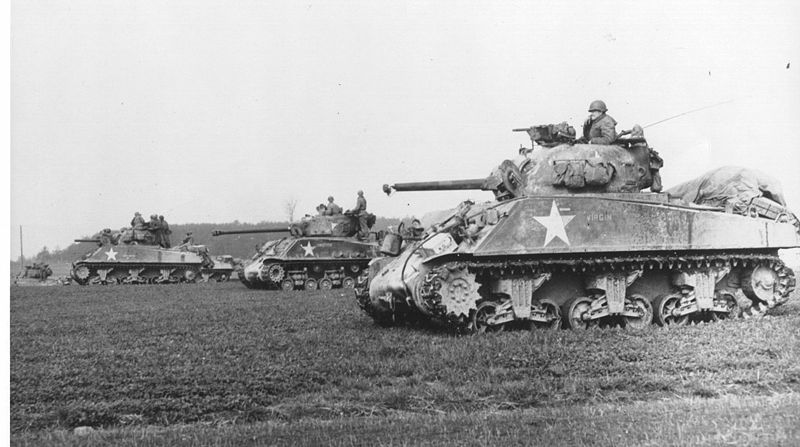
On March 24 Patton threw his 4th Armored Division across the Rhine. Now under the command of William Hoge, the captor of the Remagen bridge, the division raced about twenty-five miles toward the next barrier, the Main River-with Combat Command A scheduled in cross east of Frankfurt at Hanau, and Combat Command B some twenty miles to the southeast at Aschaffenburg.
The XII Corps commander, Major General Manton Eddy, telephoned Hoge and gave him a strange mission: Patton wanted a special expedition sent about sixty miles behind enemy lines to free "900 American prisoners" in a PW camp at Hammelburg. Hoge thought it was curious but made no comment.
Later in the day, Patton himself telephoned Hoge and in a voice pitched even higher than usual said, "This is going to make MacArthur's raid on Cabanatuan* peanuts!" Hoge said nothing to Patton but told Eddy he didn't like the idea. Sending a task force to the east would only further disperse his division, which was already spread along a twenty-mile front with orders to drive north after crossing the Main. Why take such a risk at this late stage in the war? There were many PW
_______________________________________________________
* A prison camp in the Philippines recently liberated by MacArthur.
camps-what was so important about Hammelburg? Eddy said he would take up the matter with Patton.
Hammelburg was a good-sized town on the winding Frankische Saale River, fifty-five air miles due east of Frankfurt am Main. Twenty air miles farther east lay Schweinfurt, the famous ball-bearing center. Oflag XIIIB (Offizierslager, Officer Prisoner of War Camp) was located on a saucer-shaped plateau atop a steep hill three miles south of Hammelburg. In one compound there were about 3,000 officers of the Royal Yugoslav Army, captured after the short campaign in 1941. The Yugoslavs-they preferred to call themselves Serbs-were proud, swarthy and volatile, with shabby but ornate uniforms. They were extremely kind and generous to the 800 U. S. officers who arrived in January, 1945, and by popular vote donated 150 of their own food packages to their allies. Most of the Americans had been forced to surrender early in the Battle of the Bulge; consequently they felt no pride in their unit and showed their senior officers little respect. There was almost no internally organized activity except for Sunday church services. Unlike the camp at Sagan there were no athletic, musical or dramatic programs. Few thought of escape, since it was obvious that the war would last only a few more months. Red Cross parcels were issued only once a month-not sufficient to appreciably bolster their regular starvation diet, which, even though supplemented now and then by the camp delicacy, tomcat stew, led to an inordinate number of influenza and pneumonia cases. Dysentery was almost universal.
The entire compound, in short, was in a desultory state and remained so until March 8, when about 430 U. S. prisoners, commanded by Colonel Paul "Pop" Goode, arrived from Szubin, Poland. The middle-aged Colonel, a former instructor at West Point, was sick and exhausted from his rigorous trip. But when he shambled into camp, carrying his cherished bagpipes, there was such a defiant look on his worn face that the Bulge prisoners felt a quick surge of pride. Overnight, Goode and his competent chief of staff, Lieutenant Colonel John Knight Waters, brought back discipline and order, and "Pop" became a magic name to those young officers who had been disgusted with the past state of affairs. Uniforms were cleaned, shoes shined, hair trimmed, beards shaved off. Assemblies became more military, barracks were cleaner. Goode then turned his attention to the German camp Commander, Generalleutnant (Major General) Gunther von Goeckel. The food improved, roll calls were canceled in bad weather, fuller use was made of camp facilities-and "Pop" Goode was a hero to all but a few who resented his autocratic manner.
On March 25, Major Alexander Stiller, one of Patton's aides, unexpectedly arrived at Hoge's headquarters. A taciturn former Texas Ranger with a hard, leathery face, he had been a sergeant on Patton's staff in World War I. Stiller tersely announced that he was supposed "to go along" on the expedition to Hammelburg. Hoge was surprised; he had thought that the whole operation was shelved, so he again protested to Eddy, who told him not to worry; he would handle Georgie.
The following morning Patton flew up to Eddy's headquarters. When he walked in, Brigadier General Ralph Canine, the corps chief of staff, told him that Eddy was out.
"Pick up the phone and get Bill Hoge," Patton said impatiently. "Tell him to cross the Main River and get over to Hammelburg."
"General, the last thing Matt told me before he left was that if you came by and told us to issue the order I was to tell you I wasn't to do it."
Patton showed no anger at such insubordination. "Get Hoge on the phone," he said quietly, "and I'll tell him myself." A moment later he was ordering Hoge to "carry out the plan." Hoge said he couldn't spare even a single man or tank.
"I promise I'll replace every man and every vehicle you lose!" Patton wheedled.
Hoge was embarrassed by the almost pleading tone in Patton's voice. With a baffled look he turned to Stiller, who had been listening. Stiller explained in a low voice that the "Old Man" was absolutely determined to free the prisoners of Hammelburg-and revealed that John Waters, Patton's son-in-law, was one of the prisoners.*
Forced to obey Patton's direct order, Hoge reluctantly sent the assistant division commander, Brigadier General W. L. Roberts, to Lieutenant Colonel Creighton Abrams, whose Combat Command B had just seized a railroad bridge across the Main. When Abrams learned that it was up to him to send a special task force to Hammelburg, he phoned Hoge and assured him that a reinforced company alone would be wiped out. If it had to be done, the entire combat command should go. Hoge told him that Eddy had already refused to divert a combat team for such a mission; the orders stood.
____________________________________________________________
* About a month before, three American officers who had hitchhiked across Poland and western Russia had told Major General John Deane, head of the U. S. Military Mission in Moscow, that Waters and other Americans were being marched to the west by the Germans. Deane wired the information to Eisenhower, who passed it on to Patton.
On the afternoon of March 26 Captain Abraham Baum of the Bronx was sleeping on the hood of a half-track when he was wakened and told to report at once to Combat Command B headquarters. Baum, formerly a pattern cutter in a blouse factory, was the intelligence officer of the 10th Armored Infantry Battalion. He was six foot two, rangy and, like his Combat Commander, extremely aggressive. His crew-cut hair, mustache and grin added to his already cocksure appearance.
Baum was still yawning when he entered the command post, but he snapped out of it the instant Abrams told him to take a task force behind enemy lines and bring back 900 American prisoners. No reason was given and Baum expected none. He only turned to his battalion commander, Lieutenant Colonel Harold Cohen, and jokingly said, "This is no way to get rid of me. I'll be back."
He was told to pick his own men and get moving.
By 7 p.m., Task Force Baum was set to go: 307 men, all battle-tested and full of fight, though dog-tired. The column consisted of 10 Sherman [medium tank]s and 6 [M24 Chaffee] light tanks, 3 [M7 Priest] 105mm. assault guns, 27 half-tracks to haul back the prisoners, 7 jeeps and a medic [M29] "Weasel."
[EDITOR: This is NOT an entire Combat Command. This is:
19 armored tanks
27 semi-armored half-tracks
7 unarmored jeeps
1 unarmored transport track
_________________________
307 men--of which only 95 are actually fully-armored to operate in the face of enemy fire. It's also NOT A DEDICATED CAVALRY FORCE geared towards stealth; it's a COMBAT UNIT that wants to fight/kill/capture every German encountered--thrown together at the last minute: ad hocery.]
Baum reviewed his problem. He was to plunge more than 60 miles through enemy lines with a reconnaissance force. Not strong enough to withstand a heavy attack, he would have to cause confusion as he sped through an area which was a complete blank to him-he didn't even know the location of enemy strong points.
[EDITOR: He's the INTELLIGENCE officer? WTFO? What was he doing? What about our own L-4 Grasshopper observation planes each armored division owned and operated? Why not send them ahead? Or on call to come to direct artillery fire if their presence is learned by the Germans?]
So he had to go into unknown country, fight God knew what, and come back with 900 extra passengers.
Already uneasy about the whole operation, Baum got another jolt when Abrams told him that a Major Stiller would go along. "What's the story?" Baum asked suspiciously. Abrams assured him that Stiller would only be an observer with no command function, and suggested that perhaps Patton wanted to "indoctrinate" Stiller into battle. But one look at Stiller was enough to make him realize that no indoctrination was needed. Once Patton had ruefully told Colonel Codman that he wished to hell he had a real fighting face like Al Stiller's.
Like Hoge, Abrams knew the real purpose of the mission. Although Miller had told Cohen and several others, "I'm going for the laughs and thrills," he had just admitted to Abrams in confidence, "I think Patton's son-in-law is in there." Baum's men, of course, knew nothing of all this.
In fact, some didn't even know they were going behind the lines to liberate a PW camp.
[EDITOR: this is LEADERSHIP failure. Why is an INTELLIGENCE officer leading the Task Force?]
Abrams' plan to shove Task Force Baum through the thin crust of German defenses was simple. Combat Command B would cross the recently taken railroad bridge in force and clean out the little town on the other side. Then Baum would rip through the hole they had blasted and make a break for Hammelburg, sixty miles away. He should get there by early afternoon of March 27 and, with luck, be back the same night.
At 9 p.m., March 26, CCB crossed the Main River. Though Intelligence had predicted that there would be little opposition, Abrams immediately ran into trouble and was forced to throw in everything he had before he could finally open up a road for Baum.
[ERDITOR: why are we taking a ROAD and not going cross-country to get there? The jeeps and light tanks could ascertain good enough ground for the heavier medium tanks and half tracks to negotiate their way through while maintaining surprise.]
It was midnight, several hours behind schedule, when Task Force Baum finally rumbled across the bridge-with infantrymen perched on tanks, extra ammunition and gas in the half-tracks-and headed east. It was dry and warm, with a high overcast. There was no moon. The column sped through the first villages so unexpectedly that they met almost no resistance. The tankers sprayed all possible targets, and the infantrymen tossed grenades into doors and windows to keep snipers down.
But by now the German Seventh Army knew that an armored unit had broken through-probably as much as a division-and guessed that it was Patton. Because of such daring and unexpected tactics, most German field commanders both feared and respected him more than any other American commander. Villages and towns farther along the way were warned and told to block the force, but Baum was moving so fast and violently that although he encountered small-arms and bazooka [panzerschrek] fire in each blacked-out town, only a few men were lost.
Just before dawn, the task force, after progressing twenty-five miles, roared up to the city of Lohr.
[EDITOR: this means during the 6 hours they had gone just at a rate of just 4 miles per hour, why be on a road alerting the Germans if you are going to go this slow, WTFO?]
When the light tanks came to a barricade across the highway, they pulled aside and let the Shermans smash through. A panzerfaust fired at short range and knocked out one of the Shermans, but the crew transferred to a half-track and the column pushed on, only to run head-on into a German truck convoy driving unsuspectingly into Lohr from the east. The Americans machine-gunned the trucks without stopping. When a young officer saw that some of those killed were girls in uniforms, he vomited.
[EDITOR: even the Germans had a Jessica Lynch underclass. Maybe they should be properly equipped with armored tracks so one doesn't have to vomit when murdering them at the cost of perhaps not being able to be a snob towards them before the war?]
The invaders turned northeast, following the left bank of the twisting Main River. As they passed a flak train running along the river, they destroyed the engine and threw thermite grenades into its multi-barreled 20mm. anti-aircraft guns. Not long after dawn, the task force approached Gemunden, a hilly town on the Main, at the confluence of the
Sinn and Saale rivers. To Baum it looked like a perfect place for an ambush. He sent back word not to use radios or even talk.
At 6:30 the column rolled into Gemunden. Sergeant Donald Yoerk in one of the last tanks was amazed to see German soldiers walking nonchalantly in the street carrying briefcases. This town, unlike all the others, seemed to be completely unaware that an American task force was on the loose. To the right of the highway, Yoerk saw a train come out of marshaling yards, heading in his direction. In the next tank, Frank Malinski hit the engine with his first shot, and then began blasting the cars. Suddenly an ammunition car blew up. When the smoke cleared, Yoerk could see only four wheels sitting on the track. Farther ahead, the light tanks had already set fire to several barges on the river and ripped apart a combination passenger-freight train. Now the Shermans moved up and knocked out a dozen more trains, tying up the entire yards. By chance a German division was just detraining and was thrown into confusion.
Baum told Lieutenant William Nutto to send his Shermans through town, raking both sides of the road as they went. Two platoons of infantry accompanied them on foot, but as the first two men stepped onto a bridge in the center of town it blew up, killing them both.
[EDITOR: had TF Baum went cross-country and avoided roads it would have avoided bridges being blown up in their faces.]
The Shermans milled around, cut off from the rest of the column behind them, and Germans began firing panzerfausts from windows and roof tops. Baum and Nutto were several hundred yards to the rear, talking over plans. Hearing noise of battle ahead, they ran toward the wrecked bridge just in time to see one Sherman aswarm with Germans swing its turret around as if trying to swipe them off. Suddenly a panzerfaust round exploded, throwing Baum and Nutto to the cobblestone street. Momentarily blinded, Nutto clutched his chest; he was also hit in the legs. Baum felt pain in his right hand and knee, and blood seeped through his pants leg. He yelled, "Let's get the hell out of here!" and I Milled back the column.
The main road to Hammelburg was cut off and Baum quickly elected a new route.* He detoured north along the west bank of the Ninn River, looking for a crossing. At 8:30 a.m. he sent his first message: a request for an air attack on the Gemunden marshaling yards.
The German Seventh Army had just learned about the destruction in lohr and Gemunden, and immediately ordered all available forces to
_____________________________________________________
* A few minutes after Baum had left Gemunden, a three-man Combat Propaganda Team arrived, headed by T/3 Ernst Langendorf. Langendorf had been told simply to in help TF Baum get through town and had no idea he was already thirty-five miles behind enemy lines. The Langendorf team broadcast appeals in German, and some 300 Soldiers simply surrendered. Langendorf told them to wait for the next American unit and returned home without a shot fired at him-still unaware that he had been in German territory for hours.
________________________________________
stop the rampaging Americans. It was a German, however, who helped Baum solve his immediate problem: a paratrooper home on sick leave and tired of war readily divulged that the best place to cross the Sinn River was at Burgsinn, eight miles above Gemunden.
Within a mile, the Americans captured another German of more importance but less use-a leather-coated general whose Volkswagen blundered into the column. "Who the hell are you?" Baum asked when the general proudly walked forward, pulling on his gloves. He started to explain, in German, but Baum interrupted, "Get the son of a bitch up in a half-track and let's get going."
The column crossed the Sinn, then struck off southeast on a mountain trail. The terrain was hilly and heavily wooded, but the ground was firm enough for the tanks and vehicles. In a few minutes they came upon a road gang of about 700 Soviet prisoners, who at the sight of American tanks jumped their guards and seized their weapons. Yoerk saw one Russian brandishing a bayonet as he chased a guard into the woods. Baum turned over the 200 prisoners he had already collected to the Russians, who assured him that they would continue guerilla warfare in the area until the Americans arrived in force.
The task force then crossed the Frankische Saale, and they were only five miles from their goal when a German liaison plane droned overhead. Baum stopped the column. In the relative silence he could hear armored vehicles not far away. There was no use trying to hide, so he decided to head northeast, straight for Hammelburg. Shortly thereafter he saw his first German tanks-only two, which after a few harmless shots pulled away, but Baum knew others had to be near by. At 2:30 p.m. the town of Hammelburg finally came into view. Half a mile short of the outlying houses, the American column turned off the main highway and started up the steep hill to the prison camp.
Suddenly a German tank stuck its nose around the corner ahead, then another and another. Baum ordered his remaining 6 Shermans to attack and radioed Sergeant Charles Graham to move up his 3 self-propelled guns. The fight for Oflag XIIIB was on.
The prisoners heard the first brief exchange of tank fire in the distance, and Colonel Goode joined the rush to the barbed-wire fence at the edge of the camp. Across fields dotted with grazing sheep Father Paul Cavanaugh, a Jesuit chaplain of the 106th Division, watched two platoons of German guards scramble into prepared positions along the
crest of the hill while an entire company hastily manned prepared positions astride the road from Hammelburg. On the side of the road were two 40mm. Bofors guns.For thirty minutes the prisoners waited; then all at once a cacophony of machine guns, panzerfausts, rifles, 76s and mortars rattled across the meadows. "That's the way a tank battle starts, Padre," Colonel Goode said. "I've heard enough of them to know. General Patton's boys are getting close-and the Germans are going to move us out of here." He said he had already stalled Goeckel twice that morning and hoped to keep holding him off until the Americans arrived.
As the noise of battle grew louder, some of the men drifted away from the fence toward the kitchen to break open the hoarded supplies for one final "bash." About 100 others were heading for Father Cavanaugh's barracks where he was about to hear confessions before Mass. At 3:50 p.m. there was a staccato series of blasts on the camp siren, and word was shouted from doors and windows: "All men stay in the barracks where you are!" A few stragglers darted across the compound to get to the Mass.
[EDITOR: WTFO? You should be getting ready to break out of the PW camp and start fighting as guerrillas if need be, like the Russians who didn't sit on their asses needing rescue. Instead they are playing church???]
"Since no more can get here," Father Cavanaugh said a moment later, "I will start Mass immediately and give you General Absolution before Holy Communion." While he was putting on the vestments he kept hidden in a cardboard box in the storeroom, several American shells landed near by. He hastily began the prayers at the foot of the altar-a table. He was frightened and hoped it didn't show.
At the Gospel, another shell landed in the area and everyone dropped to the floor. After waiting a moment, Cavanaugh crawled out from under the altar, and though he felt he wasn't giving them a very good example, asked them to be calm and remain kneeling. "If anything happens, just stretch out on the floor. I'll give you General Absolution now." With trembling hands he made the sign of the cross over the kneeling congregation. "Men, be calm. I am going to shorten this Mass as much as possible so that everyone may get to Holy Communion." Facing the altar, he read the "Hanc igitur" prayer. Never before had the words seemed so meaningful. "Graciously accept, O Lord, this offering of our subjection to you. Give us peace today. Save us from eternal damnation and number us in the flock of your chosen ones, through Christ our Lord."
[EDITOR: you should already know you are forgiven before joining the Army.]
Norman Smolka wasn't a Catholic but was present because he happened to be quartered in the barracks. As he looked up from the floor, sun rays burst through the window, illuminating the priest. The padre looked "as if he were God."
The object of the battle outside, John Waters, was watching the action from the ground floor of Goode's headquarters. Waters was a handsome man of thirty-nine from Baltimore. He had attended Johns Hopkins University for two years, majoring in both the arts and sciences, and then transferred to West Point. In 1931 he graduated as a second lieutenant of Cavalry. He was a quiet, soft-spoken Soldier of outstanding ability, and was executive officer of the 1st Armored Regiment when captured in North Africa in February, 1943.
Waters could see several American tanks roll across the fields, firing into the Serbian barracks. Just then General von Goeckel burst in. He was now Goode's prisoner, he said, and the war was over for him. He asked if any American would volunteer to go out and stop the fire. Apparently the attackers were mistaking the Yugoslavs for Germans because of their uniforms.
"Okay, I'll go out," Waters said. "We ought to take an American flag and a white flag so we won't get shot." He then went through the main gate, past the imposing sentry house. Beside him was Hauptmann (Captain) Fuchs, a German interpreter. A step behind came two more U. S. volunteers, one carrying an American flag, the other a white sheet on a pole. They intended to skirt the battleground and make contact from the side.
Task Force Baum was just coming directly over the ridge onto the high ground where the German guards were dug in. The tank battle on the hill had been brief but fierce. Baum lost five half-tracks and three jeeps, but his 6 Shermans had knocked out three German tanks and three or four ammunition trucks.
Great clouds of smoke were billowing as the Waters party continued toward Task Force Baum. About a half mile from the main gate they came to a barn enclosed by a plank fence. Fifty yards away a Soldier in camouflage uniform started toward them. Waters wasn't sure he was a German or an American in paratrooper uniform, and called out, "A merikanisch!"
The Soldier was German. He ran up to the fence, stuck his sniper's rifle through it and fired before Fuchs could explain. Waters felt as if he had been hit with a baseball bat, but strangely, there was no pain. Lying in the ditch where he had fallen, he thought, "Goddamn it, you've ruined my hunting and fishing."
The German vaulted the fence, backed Fuchs against a shed and yelled that he was going to shoot-and it took Fuchs several harrowing minutes to make him understand that they were parliamentaries. Then Patton's son-in-law was put in a blanket and carried back to camp.
Inside the compound, Americans were packed behind the windows, cheering as if they were watching the World Series. A stray bullet spit through the glass and everyone hit the floor, but they immediately got back to the windows. From the second floor of the infirmary the camp surgeon, Major Albert Berndt of the 28th Division, saw Sherman tanks heading up over the plateau. Suddenly .50-caliber [heavy] machine-gun slugs began tearing through the roof. Fearing an assault on the unmarked U. S. infirmary, Berndt ran down to Goode's office and suggested that a team of doctors and corpsmen set up a second aid station at the other end of the building-a solid partition divided the structure and there was no way to get from one end to the other without going outside. Goode told Berndt to do it, but he decided to wait until the heavy fire outside died down. Half an hour later, Goode learned that the second aid station had not yet been set up and sent for Berndt, who explained that he didn't think it was advisable to send his men out under fire. To Goode this was rank insubordination and he accused Berndt of disobeying a direct order. "I am hereby relieving you of your duties as camp surgeon."
At that moment the door was flung open and Waters was carried in. Father Cavanaugh was distributing Holy Communion. His trembling hands made him fear he would drop the Consecrated Host. As he finished the last line of communicants, a spontaneous shout of joy came from outside.
The priest turned to the altar and finished Mass. Then he asked, "What happened?"
"Father, we're free! We're liberated!" General von Goeckel had surrendered to Goode.
"Wasn't it wonderful!" Major Fred Oseth exclaimed. "While Mass was going on, we were liberated. You're not a Kriegie any longer, Father."
Still clad in vestments, the priest looked out the window and watched an American tank grind to a stop. Prisoners crowded around it, trying to touch their liberators. Father Cavanaugh noticed how sharply the newcomers contrasted with the emaciated prisoners. The priest slowly removed his vestments, packing them away-for the last time, he thought-in the cardboard box. When he stepped outside he saw white sheets hanging from all the windows. Americans and Serbs were shouting in wild jubilation, shaking hands and hugging one another.
[EDITOR: there is no time for this! STFU and GET OUT ASAP.]
While the prisoners were eating the most sumptuous meal ever served al Oftlag XIIIB, orders came from Goode to pack up. At dusk the Americans formed in a column of fives on Hermann Goringstrasse, blankets on backs, and keepsakes of prison life in an odd assortment of sacks and bags. Father Cavanaugh filled a flour sack-given to him by a Serb to be used as a towel-with socks, woollen shirt, bath towel, breviary and several pounds of food. A few were even carrying their Smoky Joes-stoves made from tin cans.
Illuminated by the flames of a burning building, the Americans triumphantly passed cheering Serbs. They filed through a great hole in the wire fence torn open by Baum's tanks, and headed across a field past the empty guard towers. About a mile from camp, they reached the main body of Task Force Baum atop the dark plateau, its tanks silhouetted like giant ducks against the sky.
Exhausted by the excitement of the day and the exertion of climbing, they sat on the chill, damp earth as free men. They laughed and joked. Suddenly two rifle shots rang out and the tenseness returned. Word went around: "No smoking, no lights." For almost two hours they sat shivering as the moon darted in and out of clouds. Goode was conferring with Baum, who had learned to his surprise that there were not 900 prisoners but 1291, far too many to bring back. Baum, disheartened, turned to look at the men sitting on the hill, expecting to go home. He told Goode that he could only take those who were physically able to ride on the tanks or in the half-tracks.
Goode walked over to his waiting men and told them they would be divided into three groups: those who wanted to escape on their own, those who could ride tanks and half-tracks and fight their way back, and those who felt they should return to camp because of poor physical condition. "We have been liberated and are free," he said. "But until we can get within the American lines each man is on his own. Sixty miles is the distance we will have to make-without food or supplies, and we are in a weakened condition. . . . Each man is free to do as he thinks best."
It was quite a blow to them to learn that this was not the vanguard of Patton's army, only a tiny, exhausted armored force which had knifed its way far behind enemy lines and was now going to try to fight its way back. But at least it was a chance to escape, and about 700 of the prisoners began roaming up and down the column, searching and even battling for vacant places aboard vehicles. Personal gear and extra equipment were dumped to make room for more riders. While they were loading up and being handed weapons, a group of Germans crept up under cover of darkness and fired several panzerfaust rounds. One tank burst into flames. Baum took tighter control of the motley group and re-formed the column along a dirt road.
Some of the prisoners hadn't yet made up their minds and were wandering aimlessly around the field, talking about what to do. Bruce Matthews, a chaplain of the Disciples of Christ, went up to his former regimental commander, Colonel Theodore Seely, and asked if he had any orders.
"None, Chaplain-each man is on his own."
"Do you have any advice to share?"
"None, Chaplain."
"Do you mind telling me what you plan to do, sir?"
"I'm going back in, Chaplain," Seely replied, starting for the camp.
"Thank you, sir," Matthews said and climbed onto the left fender of a half-track. The heat of the motor felt good in the chilly night.
Lieutenant Alan Jones, Jr., son of the commander of the 106th Division, was perched on a tank and glad to ride, since his feet had been frozen in the icy boxcar ride from the Ardennes. Then the tank commander decided that some of the passengers were in the path of the gun traverse, and Jones and several others were put off. Jones hobbled away alone across the plateau, guided west by the stars.
Hundreds of others had already formed escape teams and were also disappearing into the darkness. Lieutenant Alexander "Bud" Boiling, Jr., a close friend of Jones's and the son of Major General Alexander R. Boiling, commander of the 84th Division, joined with three others and headed west down the hill. They heard dogs barking. The hunt was already on.
[EDITOR: good initiative and courage here!]
More than a third of the men were in no shape to march or fight and headed slowly back to camp. Father Cavanaugh joined this sad, silent retreat. Just after midnight, he again passed through the gaping hole in the barbed wire around the Serbian compound. The Serbs, who had given the Americans such a rousing farewell a few hours before, gazed in silent dejection at the returning parade.
When the priest walked into his barracks someone said, "We are not free yet, Father."
"Well, let's get some sleep, anyway," he replied and rolled into his hunk. But a few minutes later someone shouted, "The Germans have taken over and are marching us out of here! Be ready in fifteen minutes."
At 1:30 A.M. on March 28 the 500 Americans who had been unfit to march to freedom were lined up on Hermann Goringstrasse by forty guards and herded out the main gate. Their pockets were stuffed with the only food left in camp-potatoes. As the disheartened group started down the winding road to Hammelburg, there was mist in the air and a chill dampness. In the darkness they could make out clusters of German
Soldiers waiting quietly on either side of the road. A few minutes later a motorized column approached and the prisoners were shunted to one side to let it pass through. Some of the vehicles stopped and Father Cavanaugh could hear the convoy troops talking with the guards in confused undertones.
[EDITOR: there is no going back; if you are busted out, stay out! They are lucky they were not executed.]
The exhausted Task Force Baum was slowly moving down the other side of the hill along a deeply rutted cart trail. Baum's men had been traveling and fighting for almost twenty-eight hours and they faced an even more arduous journey back to the American lines. The trail grew narrower. Finally the three medium tanks in the lead could go no farther, and doubled back a mile until another trail to the west was found. Faint marks on the rocky surface showed that the light tanks sent ahead on reconnaissance had gone that way.
[EDITOR: the ENTIRE force should have been in low ground pressure light tanks to enable cross-country maneuver and stealth AVOIDING enemy contact. THAT is the lesson to be learned here.]
As the main body fumbled its way down this dark path, they met the light tanks returning. The reconnaissance leader had good news to report: the little road ran almost all the way to Hessdorf, a town on the Hammelburg-Wurzburg highway. Now Task Force Baum rumbled ahead once more, making good progress in spite of frequent stops to let the vehicles close up.
It was almost 2 a.m. by the time the column entered Hessdorf. Near the town square the column was blocked by two abandoned German trucks. Ex-Kriegies jumped off the tanks and pushed the trucks aside, and the column roared on. The commotion so alarmed the townspeople that white sheets began flapping from windows and doors. The column milled around in the dark and finally turned back north toward Hammelburg. Now Baum was on a main highway. He could return the way he had come but he knew that would be a hornet's nest of Germans, so he decided to head northwest until he made contact with the 4th Armored Division.
[EDITOR: how about calling for help? Asking a combat Command to fight towards them? Say to Hollrich?]
His reasoning was good, but Germans were waiting for him a mile ahead, in the next town. At the outskirts of Hollrich, the lead tank creaked to a halt to avoid running into a roadblock. Suddenly, blinding flashes spurted from both sides of the highway as panzerfaust rounds slammed into the stalled tank, killing the commander and one of the ex-prisoners. The dazed gunner blindly sprayed the street with his .50-caliber machine gun.
Other panzerfaust rounds were flashing by like deadly Roman candles. One escapee clinging to the turret of the second tank was killed by a grenade, and several others cringing on the deck were wounded. It took a moment before the fatigued Americans reacted. Then the men from Hammelburg leaped into the ditch while the tankers fired machine guns into the roadblock and toward the field on both sides.
There was wild confusion as red and yellow tracers streaked across the sky. Then the fight was over just as abruptly as it had started, and only the idling motors and cries of the wounded could be heard. To Baum, it would be suicide to continue through the darkened town, and the tanks and vehicles clumsily backed down the narrow highway until they could turn around safely. A few minutes later, the column moved off the road to reorganize on top of a commanding hill. The flurry of action had stimulated the ex-prisoners and they deluged the tankers with eager advice. Baum's weary men told them, with much profanity, "to take off," and a number indignantly started toward the highway.
Baum took stock of his force. He had started with 307 men and now had only 100 who could fight, [EDITOR: WHERE are the 207 wounded/dead?] and he himself was wounded in the hand and knee. He had 6 light and 3 medium tanks, 3 assault guns and 22 half-tracks. He ordered the gas siphoned from eight of the half-tracks into the tanks and radioed a final message stating simply that at his mission was accomplished and that he was heading back.
[EDITOR: WTFO? Why not call for help to fight towards him?]
The useless half-tracks were set on fire and the seriously wounded put in a stone building marked with the Red Cross emblem. Then Baum gathered the rest of the men and told them what they were up against. They were going back cross-country and would even use half-tracks as bridges, if necessary, to ford streams. In the distance Baum could hear the roar of enemy tanks and other vehicles coming from the east. He finished with a short pep talk and shouted, "Mount up!"
[EDITOR: why didn't TF Baum go cross-country from the beginning?]
Task Force Baum was almost surrounded. To the south and north-cast, self-propelled guns were approaching; two infantry companies and six tanks were closing in from the southeast, together with 6 Tiger [heavy tank]s from the north, and a column of armored vehicles from the northwest.
Baum was just stepping into his jeep when the fastest automatic tank fusillade he had ever heard opened up; the burning half-tracks made the task force a perfect target.
[EDITOR: WHY draw German attention by setting fire to the fuel-less half-tracks? Baum is an incompetent with no concept for the need for stealth. WHY was he put in charge of this mission?]
Then, heavy small-arms fire came from the darkness. Baum's three assault guns fired smoke in a vain effort to throw up a protective screen, but the German barrage continued with deadly accuracy. 2 assault guns, a light tank and several half-tracks were hit directly and the resultant blaze attracted even more withering lire from three sides.
Major Don Boyer of the 7th Armored Division was manning a tank's .50 caliber [heavy] machine gun. Cursing continually, he enjoyed himself thoroughly for the first time since his capture in the Battle of the Bulge. But bravery was not enough. Task Force Baum was being annihilated by an enemy it could not see. Within fifteen minutes every American vehicle was ablaze, and the German tanks and infantry began to close in. With all his tanks gone, Baum himself headed for the woods, where he reorganized the remnants of his force. Several times he tried to lead an attack back to the area to see what could be salvaged from the holocaust, but each time the handful of Americans was driven back.
"Break up in groups of four and take off!" Baum yelled. He gave hasty directions and then started off with a Kriegie and Major Stiller, who had proved to be a silent but efficient fighter. The three tried to hide in a pine grove, but in minutes they were tracked down by dogs. In the ensuing melee, Baum was shot in the leg-his third wound in two days.
Everything happened so quickly that Baum just had time to throw away his dog tags lest the Germans find out that he was Jewish. As he and six others were herded back toward the barn by a single guard, Baum took off his steel helmet and was about to bash the unsuspecting German on the head, when Stiller stayed him by grabbing his arm.
Baum's men were separated from the Hammelburg inmates for immediate questioning, but several Kriegies told the guards that Baum was one of them and he was allowed to join the group marching back to the camp. Supported by Stiller and another man, he hobbled down the road.
The first light of day revealed a hill littered with wrecked, smoldering tanks and half-tracks. The surrounding trees were smashed or shell-scarred; the barn marked with the red cross lay in ruins. This was the graveyard of Task Force Baum.
The mission to Hammelburg was a complete failure, but the gallant force had accomplished something quite different and even more important than Patton intended. Task Force Baum had left a path of destruction in its wake. Every town it had passed through was in a state of confusion and hysteria. The German Seventh Army headquarters still did not know what had happened, and had already diverted the equivalent of several divisions to guard strategic crossroads and bridges while another large force was scouring the hills with dogs, trying to round up about 1000 liberated Americans and Russians.
The cost was not small. In addition to Baum's own losses, John Waters, the gentlemanly cavalryman from Baltimore, the husband of Patton's daughter, "Little B," was lying in the hospital at Hammelburg, badly wounded. The bullet had entered Waters' right thigh and torn through his left buttock. A Yugoslav doctor, Colonel Radovan
Danich-equipped only with paper bandages and a table knife-was skillfully keeping the wound drained.The Third Army press officer merely told correspondents that a task force had been lost and gave no details. Some time later, however, bits of the story were revealed and Patton called a press conference. He told newsmen that he had not known until nine days after Baum reached Hammelburg that his son-in-law was among the prisoners. To prove his statement, he displayed his official and private diaries and said, "We attempted to liberate the prison camp because we were afraid that the American prisoners might be murdered by the retreating Germans."
Hoge, Abrams and Stiller knew differently but as good Soldiers kept silent. Stiller died without revealing the truth and the other two waited for almost twenty years.
The fatal errors in force structure, design and execution of TF Baum will not go away by not discussing the mission, and in fact contributes to the current armored vehicle stampede mentality that damns Armor branch to impending extinction at tree-covered Fort Benning at an infantryman's walking pace. Just because we can't seem to do special operations with tracked armored vehicles--doesn't mean it cannot be done since others have like Skorzney in WW2, the Israelis etc. We have to face the facts that we have relegated tank warfare to unimaginative lemmings who want to use mass and numbers in an all-out nation-state war setting when what is actually required for small-scale raids and recons is a precise operational maneuver group acting as CAVALRY to get the job done with surprise upon the enemy. Former Major Lou Dimarco's 1992 Mechanized Cavalry Doctrine CGSC paper is a must-read to ascertain how far the current "tank destroyer" Armor branch has gone astray from operational realities.
www.combatreform.org/mechanizedcavalrydoctrinedimarco1995.pdf
If Patton's entire army had stampeded towards the POW camp, the Germans tipped off would have herded the POWs to another location--or if they were more evil than they were, murdered them on-the-spot. If U.S. Army Armor branch is going to even exist in another 10 years, it needs to develop a CAVALRY in air-transportable light tanks with cross-country mobility backed by its own Stuka-type observation/attack planes. Details:
 U.S. Armor: Cavalry 1917-1967
U.S. Armor: Cavalry 1917-1967
scribd.com/doc/103346230/1973-U-S-Armor-Cavalry-A-Short-History-1917-1967
(1973) U.S. Armor-Cavalry: A Short History 1917-1967 by Inveteratus
www.combatreform.org/grasshoppersmustreturn.htm
combatreform.org/killerbees.htm
Ground Combat Vehicles (GCV) of over 30 tons will not be C-130 air-transportable nor closed terrain cross-country mobile to do any better than TF Baum running up a road and alerting the entire enemy--and may not even exist since a v-hull bottomed FCS will be no more affordable in 10 years than it is now. Moreover, each year Infantry branch is at war with Armor branch and in cahoots with corrupt defense contractor GDLS picking off a heavy brigade combat team, and ruining it into wheeled, road-bound Stryker trucks. Details:
combatreform.org/strykerhorrors.htm
In a few years the entire U.S. Army will be ruined onto wheels and unable to march on a Baghdad or a Tehran regardless of how large a stampede of vehicles we throw at an enemy that will lick his lips at all the easy mobility kills for his mortars, artillery and land mines that will be finished off by anti-tank guided missiles (ATGMs) and tank fire. The entire U.S. Army now destroying itself onto wheeled Strykers a brigade each year for GDLS corporate greed profits $$$ and will be even weaker than TF Baum was with its open-topped half-tracks with high ground pressures only at their front wheels. Details:
combatreform.org/WHEELSVSTRACKS
Some People Who Take Tanks and Recon-in-Force Seriously: Beginning with The Russians
Russian IL-76 transport jet airdropping a BMD-4 Airborne infantry-carrying light tank
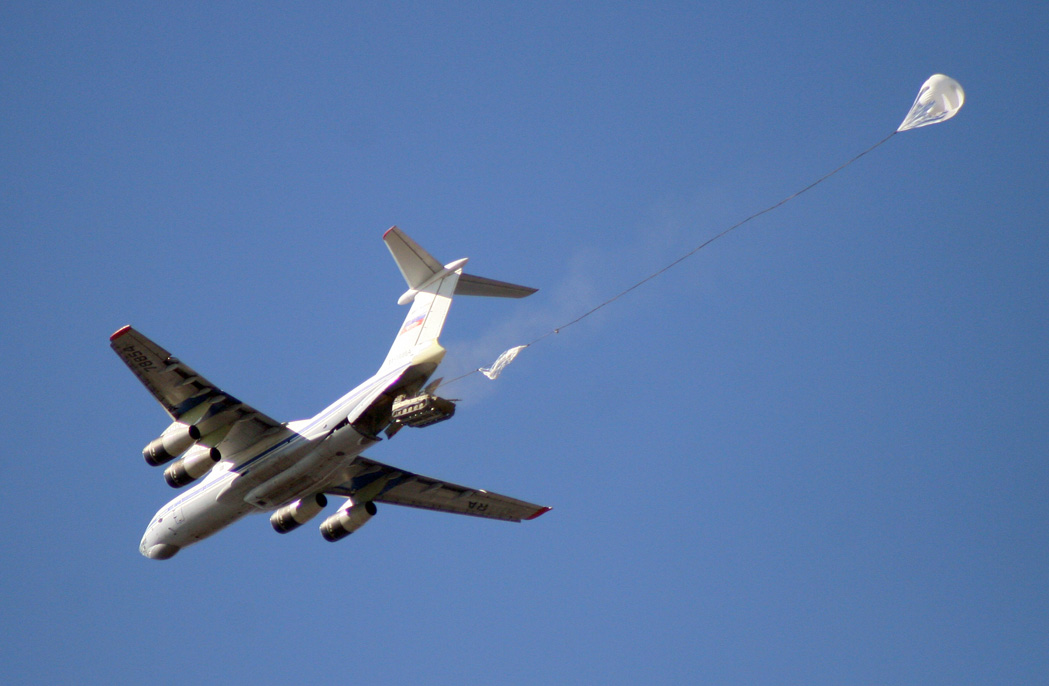
 youtube.com/watch?v=O-UW82_2L8U
youtube.com/watch?v=O-UW82_2L8U
The Russians despite all their Soldier-level hubris are aware that they won WW2--only because of the tank. In fact, they only survived the German Nazi onslaught because of the tank. They knew cross-country mobility was the key beginning with their wide-tracked T34 medium tanks which they mass-produced. In contrast, the Germans lost the war due to their wheeled trucks being unable to supply their men in Russian mud and snow. Details:
combatreform.org/trackedresupply.htm
"The German army, slowed down owing to lack of a proper cross-country administrative train for their army of maneuvre, failed to bring about the out-flanking operation which would have enabled them to cut off their enemy's retreat and to deal with him with some deliberation...if the German army had had a fully equipped and powerful army of maneuvre, fed by a highly mobile cross-country administrative train and backed by a mobile and powerful siege train of heavy land and air forces, then Moscow at least would have fallen."
--British General Francis Tuker in his book, The Pattern of War combatreform.org/thepatternofwar.htm
The Russians never forgot this--which is why after the war they built huge mechanized tank armies that could have over-run Europe had we not scrapped together enough of our own tank and infantry units to be able to stop them long enough for nuclear weapons to be brought to bear. However, in the U.S. Army bureaucracy where complacency is directed into two idiotic directions: those that are macho and want to prove their insecurities by fighting on foot and those that want to hide their insecurities by being in an armored stampede.
Russian Paratroops and their BMD deploying from a Mi-26 Halo helicopter
Unlike the dumb Americans, the Russians know that tanks can and should be used for Airborne/Special Operations and have taken steps to airdrop their light tanks by parachutes from fixed-wing aircraft and already have a heavy lift helicopter, the Mi-26 Halo to airland them vertically while we talk, talk, talk about "Mounted Vertical Maneuver", "FTRs", "JHLs" and now "JFTLs". The American saying about BS is "talk is cheap"--but it should be amended because our talk is VERY EXPENSIVE as we waste $$$BILLIONS on BS "studies" and nothing comes of it in the end. The American military bureaucracy isn't serious about air-mech 3D maneuver warfare any more than its serious about war; which it's not. Playing garrison games here in the U.S. of A or OCONUS is what the "From Here to Eternity" racketeers want to do.
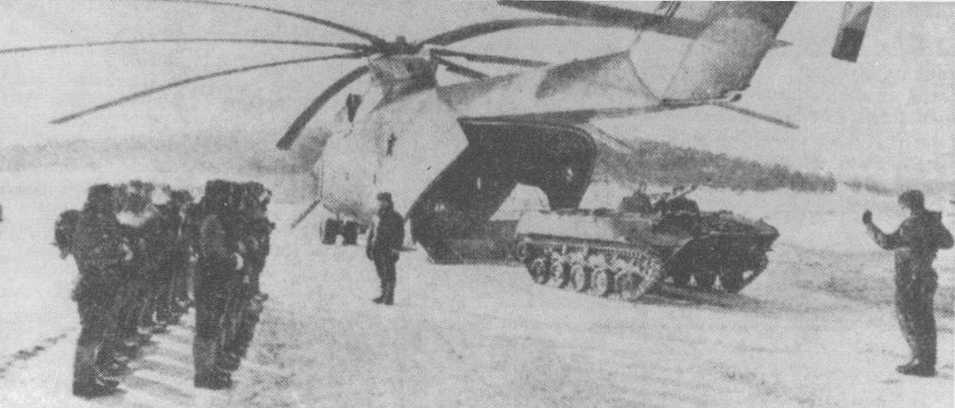
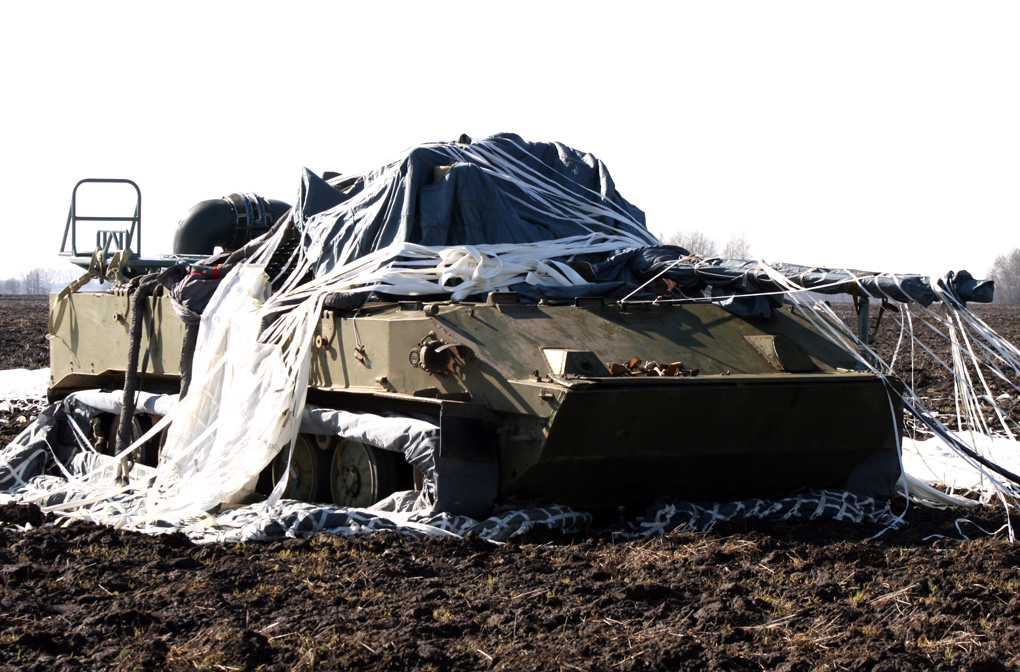
Russian BMD-4 after air bag cushioned airdrop
In fact, the Russians have now perfected air bags to cushion their VDV Airborne's light tanks and other vehicles when airdropped, eliminating trash like cushioning materials on the drop zone. Instead of using full-size pallets to slide out from their transport planes, only small runners are used under the tracks so when they reach the ground the runners, airbags and cargo parachutes can be collected for re-use and most importantly--to not leave a trace of their insertion.
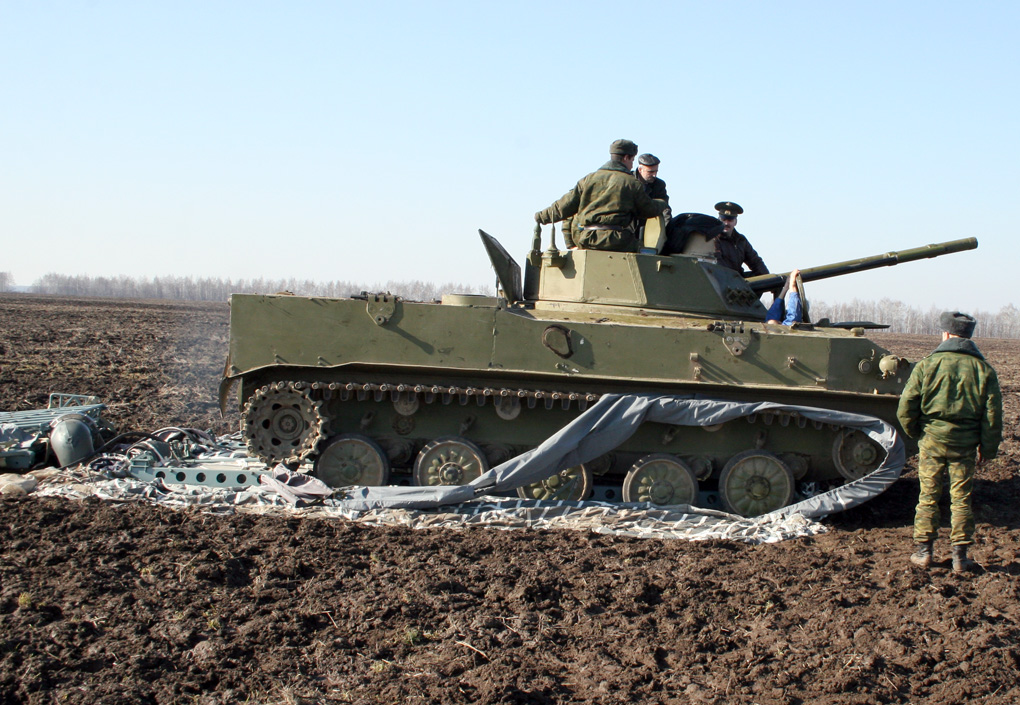
Those that are to be transported by BMDs jump AT THE SAME TIME as it exits the rear ramp thanks to drogue-chute deployed parachutes.
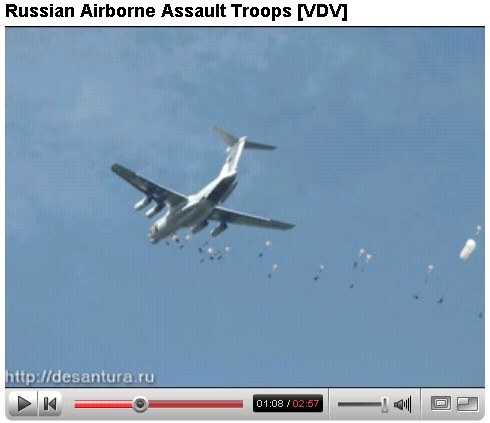
Not only can the Russian VDV Paratroop jump IN FRONT OF THE ENGINES OF IL-76 TRANSPORT JETS, he can jump at 300 mph and at high altitudes to avoid enemy air defenses to include missiles because his parachute opens on a delayed timer with hand ripcord back-up exploiting his drogue chute to free fall stable without all our silly civilian skydive body position exertions and macho training courses we hold so we can wash out people to make ourselves feel superior-to-thou. The Russians are about getting the job done with the maximum combat power--not instigating phony rites-of-passage to boost egos at other's expense.
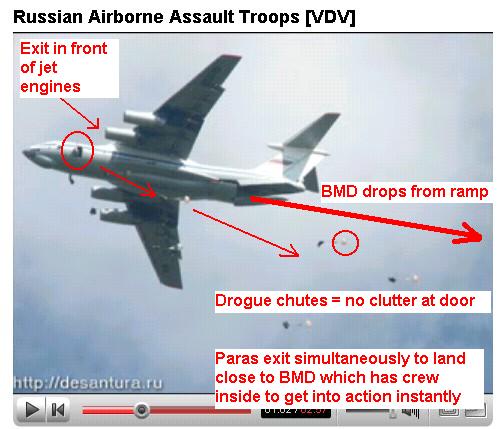
Russian Paras actually Jump at High Speed; American Paras jump at LOW speed and just trash-talk about how "high speed" they fantasize they are
Much ridicule is heard in the west about the Russians having the crew of the BMD ride in cushioned seats INSIDE so they are already there to de-rig quickly upon landing. It works, so the basis of such American imbecility is empty.
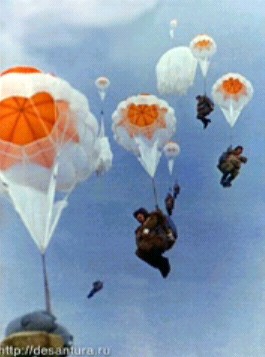
Powerful Russian VDV Brigade Combat Team
However, no one is joking about the 100mm, 30mm and 7.62mm medium machine gun armament of these Paratroop-infantry-carrying BMD-3/4 light tanks that puts our weak armament light and medium tanks and wheeled trucks to shame. Compare the Russian Airborne VDV Brigade to the wimpy pedestrian American Airborne Brigade...the Russians would kick our asses in a fight--thank God they are our allies today! It's not easy to do a comparison because the U,S. Army is full of bullshit artists trying to con us into thinking things are AOK--when they clearly are not.
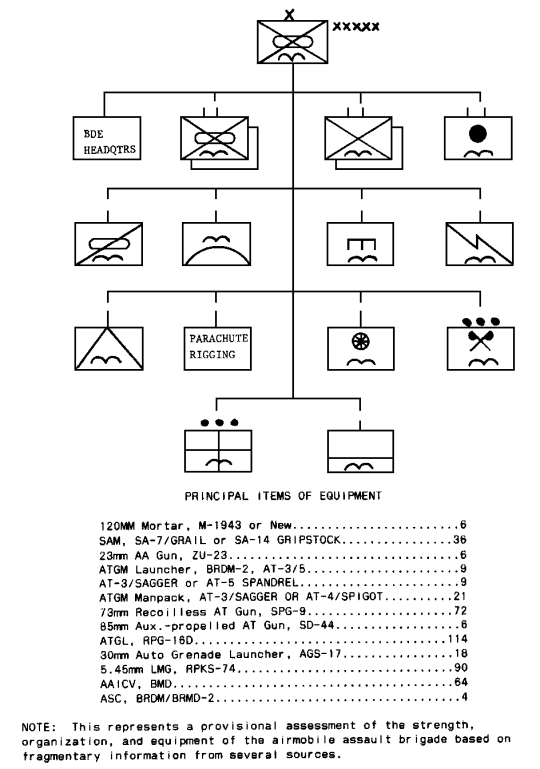
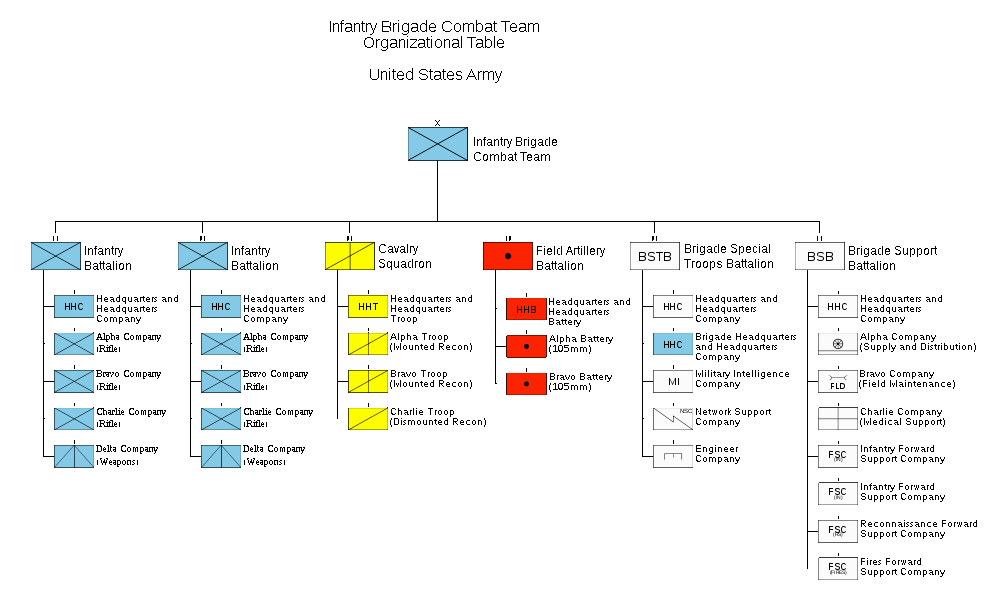
Weak American Light Infantry Brigade Combat Team
globalsecurity.org/military/library/policy/army/fm/71-123/Appb.htm
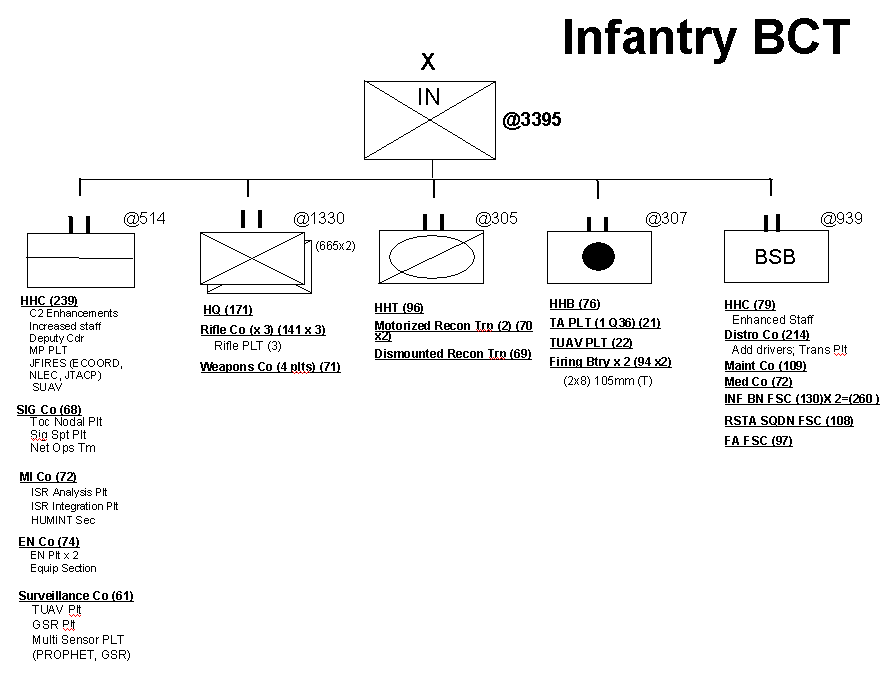
FM 71-123 lists the following equipment for a light infantry battalion:
Summary of Equipment
The primary weapon of the light infantry battalion is the M16. There are 65 M203 grenade launchers, 18 M60 machine guns, and 18 Dragon in the battalion. There are 4 x TOWs, 4 x 81-mm mortars, and 6 x 60-mm mortars. The battalion has 27 x HMMWV [trucks] and 15 motorcycles. There are no 2-1/2 ton or larger trucks in the battalion. There are 42 AN/PRC-77 radios, which are the primary means of communications within the battalion. There are no redundant radios. This information is from the AOE Nov 89 TOE and may not reflect modifications made to specific unit MTOEs.
The motorcycles are gone; commanders are afraid Soldiers will get hurt driving them. Javelins have replaced the Dragon anti-tank guided missiles (ATGMs). M240s have replaced M60 medium machine guns. M4 carbines have replaced M16 5.56mm assault rifles. An Airborne battalion has 28 x Humvee trucks in its Delta anti-tank weapons companies which have TOW ATGM launchers, .50 caliber and 40mm heavy machine guns.
So you multiply this by 2 for the two battalions the L-IBCT has, you get:
American Airborne L-IBCT
1330 men with x 5.56mm carbines (65 with 40mm grenade launchers)
or M249 LMGs [minus 18 men with 7.62mm medium machine guns]
18 men with Javelin ATGMs
28 Humvee trucks with TOW ATGMs, .50 caliber or 40mm heavy machine guns
8 men with 81mm medium mortars
12 men with 60mm light mortars plus:
16 x 105mm towed howitzers
Subtract the 1, 330 actual infantrymen, 74 combat engineers and 307 light howitzer artillerymen from the 3, 395 total men and you get 1, 686 men running around playing with electronic gadgets or acting as petty tyrant bureaucrats, 305 driving around in flimsy Humvee trucks with sensors or passing out cases of food/ammo. A tooth-to-tail ratio of about 1 "John Wayne" for 1 "Jessica Lynch".
A giant clusterfuck of victims on foot with flimsy wheeled trucks that can at best march at 4 mph but will be pinned down fatally as soon as it receives enemy fire.
Russian VDV Airborne BCT
6 x 120mm towed heavy mortars
36 x SA-16 SAMs
6 x 23mm towed AA guns
9 x long-range ATGMs
21 x short-range ATGMs
72 x 73mm towed recoilless rifles
6 x 85mm ASU-85 self-propelled guns (replaced by 2S9 None 120mm SPMs)
18 x 30mm automatic grenade launchers
114 x RPG-16 anti-tank/assault weapons
90 x RPK light machine guns
64 x BMD-4 light tanks with 100mm, 30mm, 7.62mm weaponry
4 x BRDM wheeled armored cars
The Russian VDV BCT has 2 x light mechanized infantry battalions, 2 light infantry battalions on foot and a mechanized artillery battalion compared to the American Airborne BCT that has a mere 2 light infantry battalions on foot and a cavalry squadron in flimsy wheeled trucks. The American Airborne BCT has ZERO tanks. ZERO self-propelled guns. ZERO recoilless rifles. ZERO reusable RPGs. ZERO heavy mortars. ZERO anti-aircraft cannon. The American Airborne BCT is road and trail bound where land mines await handicapped by wheeled trucks. In contrast, the Russian VDV BCT is TRACKED and can advance in the face of enemy fire at 40+ mph and is amphibious and cross-country mobile.
The Russian VDV BCT can out-shoot and out-fight and out-maneuver the American BCT by several orders of magnitude; it's no wonder that fighting mere Sub-National Conflict (SNC) rebels with AKMs and RPGs in Afghanistan that the minute they duck behind a thick mud wall our impotent small arms bullets are smothered and we have to constantly call in airstrikes that wipe out entire buildings--killing innocent civilians and making more rebels. Some "COunter-INsurgency" (COIN) prowess.
Proper "COIN" SNC Force Structure & Techniques
combatreform.org/johnpaulvann.htm
If we had to fight a Nation-State War (NSW) opponent equipped like a Russian VDV built around light tanks to form a powerful combined arms force, we'd get creamed.
The video below proves the Russians are very much aware of our stupidity for failing to exploit our M113 Gavin light tanks and fit heavy armament to them.
Russian BMP Development Video
 youtube.com/watch?v=7lZ7IEyeBIo
youtube.com/watch?v=7lZ7IEyeBIo
Fortunately, the American L-IBCTs can reform themselves by replacing fatally flawed Humvee trucks in their Delta Weapons companies with high-technology upgraded M113 Super Gavins: making them into Dragoon Companies
combatreform.org/itmaneuversabattalion.htm
Clearly, the innovative Russians can field and have fielded units into combat that can do reconnaissance in force. It's likely that had they been tasked to rescue POWs in WW2 using reconnaissance-in-force techniques--instead of looting and raping as they went as per Stalin's wishes--the heroic people who fought back at the Warsaw Rebellion would have been rescued and survived. As positive example, the Russian military saved the day in 2006 rescuing the South Ossetians from Georgian butchers:
combatreform.org/georgianwar.htm
Tanks that Swim and Fly: Russian Tank Air/Sea Delivery Innovations
http://englishrussia.com/index.php/2010/07/05/tank-or-a-waterborne-vehicle/
Again, the Russians INNOVATE; the Americans TALK
Just recently it came to my attention that the Russians experimented with powered pontoons to get medium-heavy tanks ashore. Their light BMD-3/4s and BMP-3s already have buoyancy and have waterjets to propel them to shore. The brilliance of their ideas are that they know that they key is to find the simplest, MINIMALIST solution--not racketeer it for maximum corporate profits at tax payer's expense. This is why the bloated USN/Mc conglomeration is such an expensive and weak abomination.
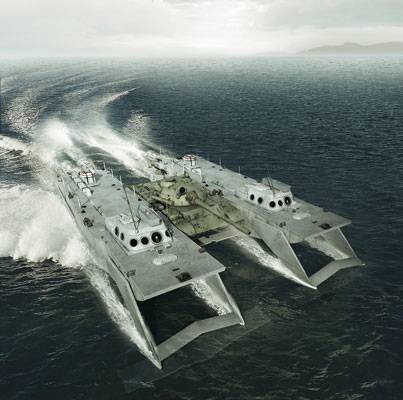
The beauty of the minimalist APPENDAGE is that it does not PERVERT the basic tank's land functions like the grotesque GDLS EFV amtrack that tries to rush ashore like a speedboat and once ashore--if it even makes it--is a huge high-profile target.
combatreform.org/amphibiousinfantrytanks.htm
Once on land, the appendage drops off and the uncompromised land tank fights with full efficiency. In theory, you could have more high-speed water kits than landing craft that carry tanks on a given ship or submarine.
UPDATE 2013: The T6 Device--Adding Pontoons to Tanks Proven in Combat by the U.S. Army in WW2!
amazon.com/Amphibious-Tanks-World-War-Vanguard/dp/1849086362/ref=sr_1_1?s=books&ie=UTF8&qid=1357079413&sr=1-1&keywords=zaloga+steven+AMPHIBIOUS#reader_1849086362
U.S. Amphibious Tanks of World War II (New Vanguard) [Paperback]
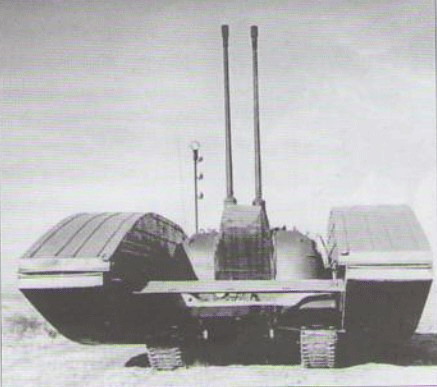
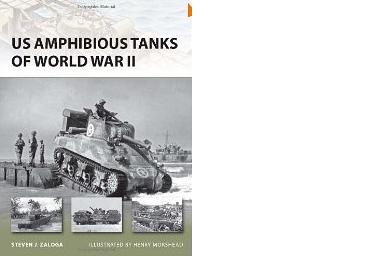
Steven Zaloga (Author), Henry Morshead (Illustrator)
3.5 out of 5 stars See all reviews (2 customer reviews) | Like (22)
List Price: $17.95
Price: $12.01 & eligible for FREE Super Saver Shipping on orders over $25.
You Save: $5.94 (33%)
The advent of combined-arms operations in World War II created the need for specialized armored vehicles. In the case of amphibious attacks, the issue arose of how best to land tanks on a beach. Although a variety of specialized landing craft were developed, the Dieppe raid in 1942 encouraged the development of tanks that could be deployed from further off-shore to limit the vulnerability of the LCT craft. The deep-wading equipment that they developed was first used during Operation Husky on Sicily in July 1943, and subsequently for Operations Avalanche (Salerno, September 1943), Shingle (Anzio, January 1944) and Overlord (Normandy, June 1944). The US-manufactured DD tanks were used during Overlord by both US and British forces, and again in 1945 during the Rhine crossings. Initially, developments in the Pacific Theater were separate from those in Europe. The Marines learned from the Tarawa landings in 1943 that unprepared tanks could not be safely landed even in shallow water. DD tanks were never seriously considered for the Pacific, so other solutions were sought. A detailed study of specialized US amphibious tanks, this is a title that will appeal to those interested in both Pacific and European Theaters, modellers and collectors.

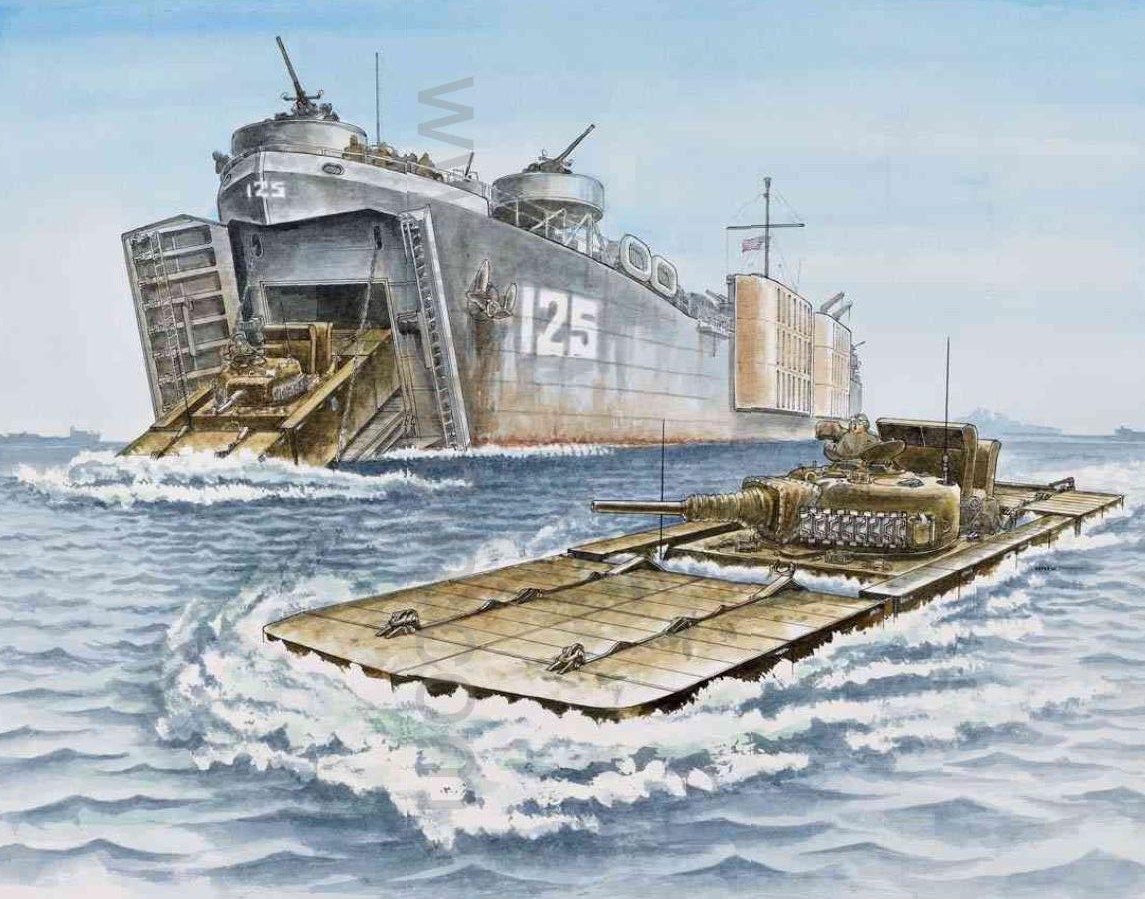
Actual picture of the KT-40 glider in flight built around a T60 Light tank
What is even more fascinating is that if the appendage delivery aid concept is applied to flight, a RIF unit could FLY itself over sea mines and then land and detach its minimalist wings/power Aero unit to be fully land powerful. Of course, the Russians were the first to realize tanks could be made to fly by adding wings. Commander Ian Fleming wrote about ground vehicles flying in his children's story, Chitty, Chitty Bang Bang and the 1975 James Bond movie loosely based on his novel The Man with the Golden Gun featured a flying car as a getaway means for the villain Scaramanga played by cousin and WW2 SOE operative Christopher Lee.
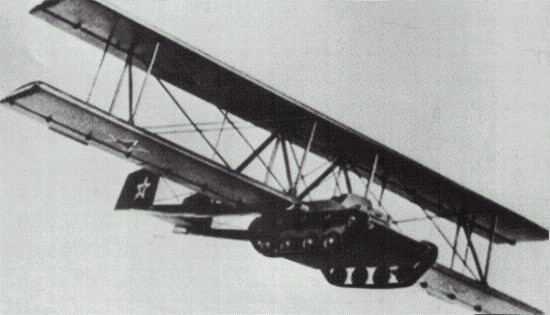
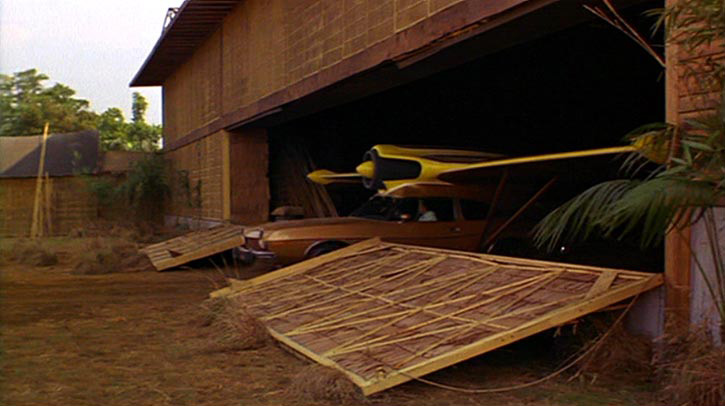
Scaramanga escapes 007 by flying car in The Man with the Golden Gun
At some point in the future, armies will get smart and cut themselves free from vulnerable air bases by attaching Aero units to their light tank units and staying dispersed, camouflaged and mobile.
AeroGavins Video
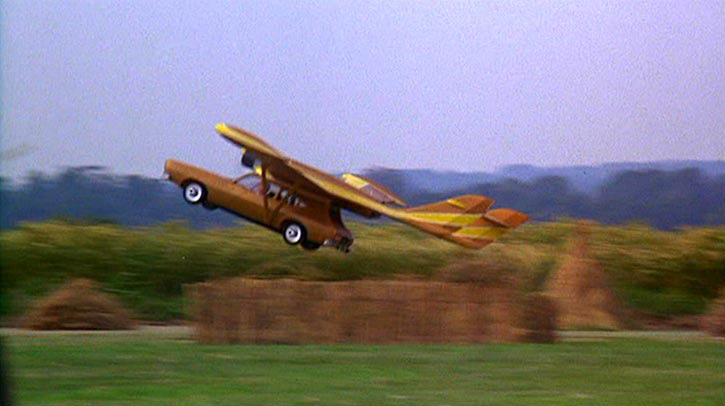
 http://il.youtube.com/watch?v=SwHqLtK_TpY
http://il.youtube.com/watch?v=SwHqLtK_TpY
To the small minds that populate the USMILocracy, AeroGavins are too much empowerment and innovation for time-servers wanting to act like petty tyrants or collect a middle-class paycheck. However, the future of warfare is for tanks to fly. If the best we can do now is hire a separate aviation unit to fly tanks in cargo aircraft to get 3D maneuver, then let's do it and stop talking about doing it.
Dutch and British Paras and Royal Marines Lead the Way
The British have since WW2 been far more professional than the USMIL understanding TERRAIN types require LIGHT tracked tanks with low ground pressures. In contrast, the U.S. Army full of bullshitters trying to con-nive excuses for light infantry pedestrian foot-slogging have created lies like broad-brushing all tanks as HEAVY and then foisting the lie that ONLY men on foot can traverse closed terrain. Look at the BS graphic below; a classic example of SOPHISTRY: something that on the surface SEEMS OK--but when examined in detail is utter lies.
U.S. Army Bullshit 101 to racketeer pedestrian foot slogging
This dangerous lie is why light infantry narcissists incompetently command U.S. forces in Afghanistan--and why American light and medium tracks are not being employed like our smarter NATO brethren have done so they have overmatching armored mobility and firepower--and don't have to air strike villages and make more rebels. Details:
The videos below show British and Dutch light infantry employing light tanks without their penises falling off. The Scorpion/Scimitar light tanks were critical to British victory in the 1982 Falklands war and they have never forgotten this. In contrast, we have forgotten everything we paid for in WW1, WW2, Korean and Vietnam war blood to make apparent.
NATO Light Tanks in AFPAK: Where are America's?
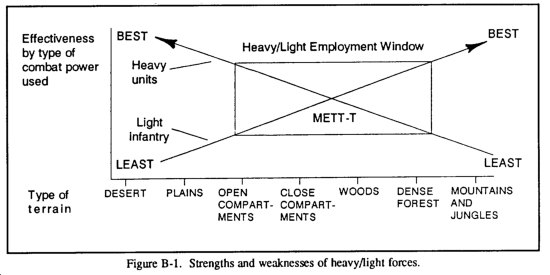
 http://il.youtube.com/watch?v=yPkugOmfn9g
http://il.youtube.com/watch?v=yPkugOmfn9g
 http://il.youtube.com/watch?v=ZKa3tK3zi4c
http://il.youtube.com/watch?v=ZKa3tK3zi4c
Bv10S Vikings have excellent, low-ground pressure tracked mobility
The British Royal Marines under the inspiration of Major Jez Hermer and Wilf Owens have adopted the enlarged BV10S version of the armored Bv206S to empower them as light mechanized infantry.
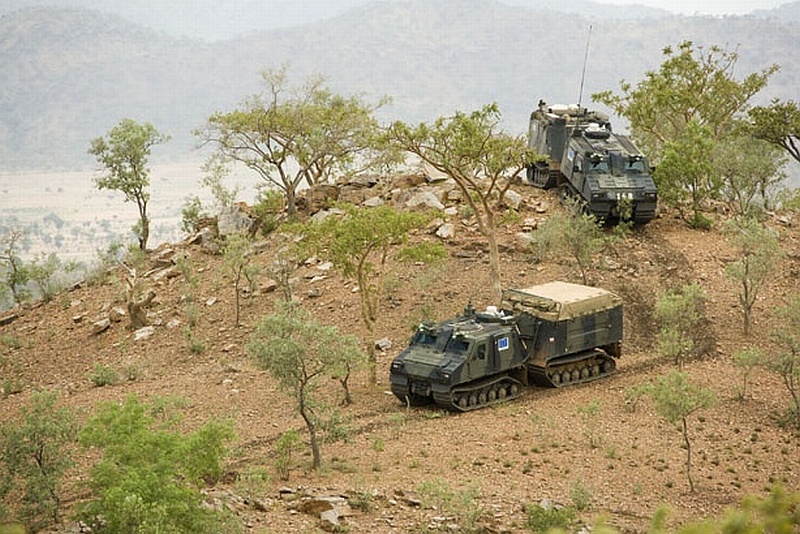
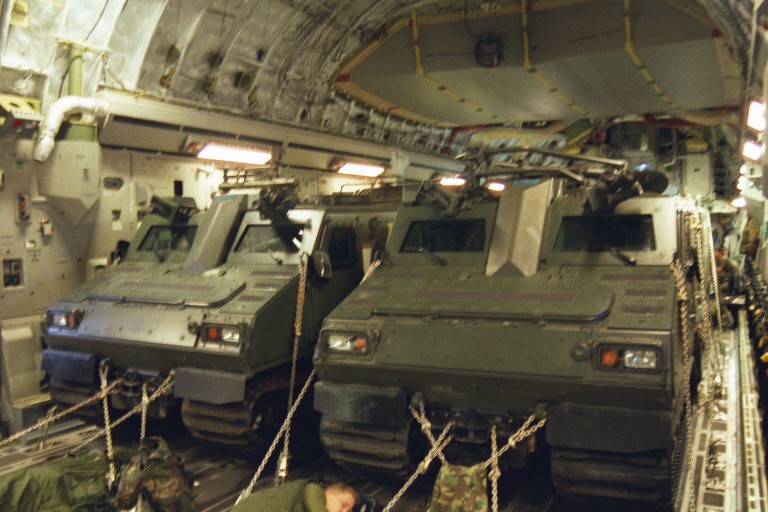
Bv10S Vikings deploying by RAF C-17 Globemaster III jet transports
While the Bv10S is amphibious by its tracks (like LVT-4s were in WW2), its safer to swim from ship-to-shore if more powerful waterjets or propellers are fitted. The BV10S can be flown under-slung CH-47 Chinook and larger helicopters to get ashore over sea and land mines. The British Royal Marines have adopted their "Vikings" without losing their masculinity and now are more capable than their chest-beating USMC cousins.
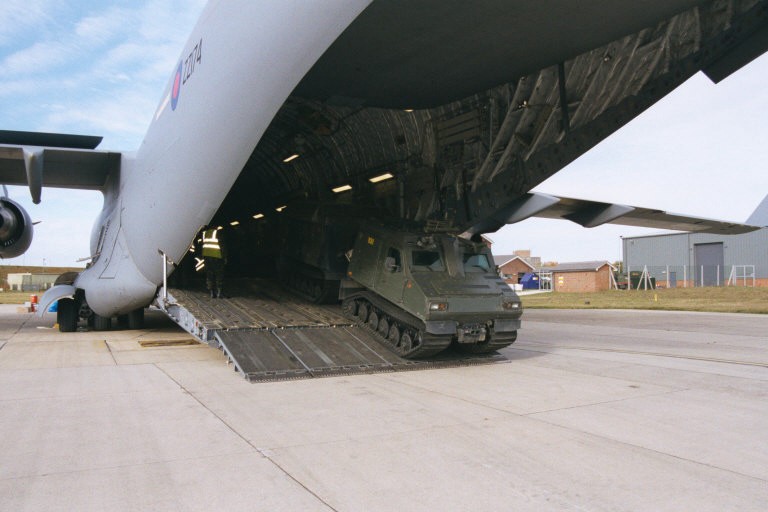
British Royal Marines Bv10S Viking underslung CH-47 Chinook
What Right Looks Like: Recons/Raids in Force from Mobile Offshore Bases (MOBs)
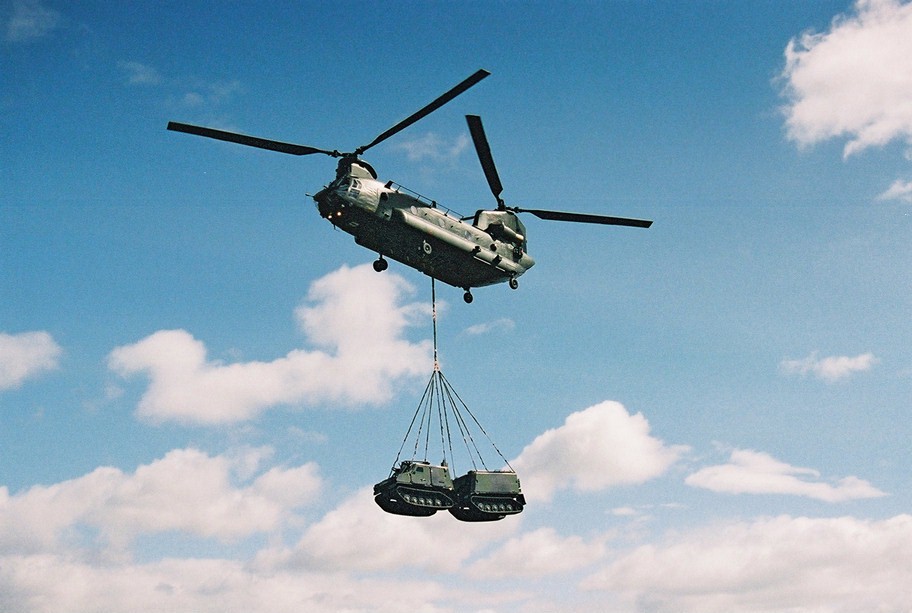
Video British Paras & Scimitar Light Tanks
 youtube.com/watch?v=_qpN1VECZX4
youtube.com/watch?v=_qpN1VECZX4
Imagine instead one of the USMIL bureaucracies that do recons were to suddenly act like professionals and fielded high technology M113A5 "Super Gavins" by modifying existing M113s. Let's hypothesize the innovative USN SEALs. They opt for a reduced size, 4-roadwheel "Mini-Gavin" that can roll-on/off from inside USMC CH-53E/Ks helicopters or fixed-wing aircraft C-27J Spartan and larger.
Video Mini-Gavin
 http://il.youtube.com/watch?v=ddnntGA8vEs
http://il.youtube.com/watch?v=ddnntGA8vEs
If they want to recon the surf zone and beach landing sites, SEALs jump into the water and meet up with Mini-Gavins and motorized kayaks. The Mini-Gavins act as mother ships for the kayak combat swimmers who look for sea mines and obstacles ahead. If inland recon is desired, it's IN FORCE as the Mini-Gavins act as mobile hide sites with superior armored mobility and sensor-backed firepower. The kayaks are strapped to the outside of the Mini-Gavins so the force is completely self-contained, leaving nothing behind for the enemy to discover, preserving secrecy. A backhoe device would enable the Mini-Gavins to burrow quickly under the ground in minutes while under the cover of darkness--no desperation hand e-tool digging as dawn approaches. Camouflage netting or dirt on top completes the mobile hide site that can have a latrine and food/water to sustain the SEAL recon unit for many days at a time. If "compromised" by the enemy, the recon team is in FORCE and doesn't have to desperately run for its lives; it's got armored mobility and vehicular size firepower to break contact with the enemy and avoid decisive engagement. The RIF team may even move to a different location and continue its mission especially if it destroys the security forces that found it. And of course, the light mechanized RIF can fight its way out and exfiltrate back to a pick-up location or all the way back to a friendly Forward Operating Base (FOB).
In a raid mission, Mini-Gavins can carry long-range firepower means like autocannon, recoilless rifles, mortars and missiles to pulverize enemy targets from a safe stand-off pre-empting the need for commandos on foot to expose themselves and lay charges on foot as befell British SAS team Bravo 20 in the first Gulf War. Fighting from QUALITATIVE OVERMATCH, RIFs are likely to prevail with little or no casualties making it more likely casualty-averse politicians will send them in to nip threats in the bud.
MOB video
 http://il.youtube.com/watch?v=bKgft_gqchA
http://il.youtube.com/watch?v=bKgft_gqchA
RIFs can be on Mobile Off-shore Bases (MOBs) in the Arabian sea ready to deploy by USAF fixed-wing aircraft and airlanding or by parachutes to any area with air-mech overmatch. An Air-Mech-Strike BDE on the MOB eliminates the need for 100k U.S. occupation troops causing rebellion amongst the locals, as well as saving the U.S. taxpayers $$$BILLIONS of dollars.
MOB Force Structure
1 x Army Light Mechanized Infantry Brigade Combat Team with Super Gavins, AmphiGavins and eventually AeroGavins includes Attack Pathfinders for drop/landing zone recon
1 x battalion of Sub-National Conflict Corps civil-military affairs experts
1 x Squadron of C-130J Super Hercules to transport the LM-IBCT by paradrop and STOL airland; eventually ESTOL with Air Cushion Landing Systems (ACLSes)
1 x Squadron KC-130J Super Hercules Cargo/Tankers to refuel in flight or on ground MOB platforms
1 x Squadron of OA-10B Super Warthogs with a second-seat for an enlisted AFAC observer for maneuver air support; ASW/ASuW kits to act as SeaHogs
1 x Squadron of F-22 Raptors for Air Supremacy
1 x Squadron of CH-47G SpeedChinooks or CH-54 SpeedCranes for VTOL
1 x Squadron of C-27J Spartans for small recon unit insertion and act as mini-gunships
1 x USN SEAL Platoon with motorized kayaks for beach landing site recon/survey
1 x Battery of Patriot SAMs for air defense
1 x Battalion's worth of Marine Fleet Anti-terrorist Security Team (FAST) Teams to guard the MOB itself from small boat, UAV, frogmen attack (will have to radically improve selves)
1 x Air Delivery Company of Riggers
1 x Detachment of RF-15 Recon Eagles for air reconnaissance
1 x Squadron of EA-6B Prowlers for ECM/jamming
* MOB itself must have CIWS and RAM anti-PGM defensive systems like any USN surface ship has--but in greater quantity
Camping thousands of adolescent Americans in foreign countries is military malpractice and a recipe for civilian atrocities. Read the Army's MHAT report. A Sub-National Conflict Corps composed of older, more mature, adult professionals needs to spearhead any U.S. security assistance to an allied nation; not just shuttling in brigades to feed a huge U.S. presence racket which is counter-productive to stability. Details:
combatreform.org/johnpaulvann.htm
If the USG bureaucracy doesn't want to create a SNC conflict corps, the American tax payer should create a privately-owned force from scratch using available container ships; think a MORAL and COMPETENT Blackwater:
combatreform.org/AIRBORNEMUSEUM/nlmb.htm
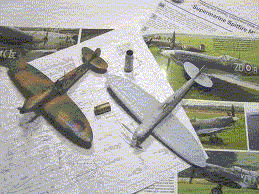 BUILD-A-MODEL:
BUILD-A-MODEL:
squadron.com/product-p/etm7244.htm?ID=147
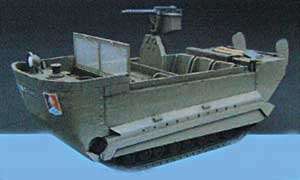
1:72 ExtraTech M29C Weasel - ETM7244
List Price: $71.99
Our Price: $64.79
Stock Status:(Out of Stock)
Product Code: ETM7244
Studebaker-built WWII-era, amphibious tracked carrier resin kit. Highly-detailed resin hull, suspension and interior, .30 cal machine gun, 1-piece resin track assemblies and photo-etch parts (rudders, rudder linkages, windshield frame/wipers, MG pintle, covers, screens and additional details). Decals for 5 vehicles: 3 French machines, Indochina and 2 U.S. marine schemes, Okinawa.
 READ-MORE-ABOUT-IT:
READ-MORE-ABOUT-IT:
squadron.com/product-p/tp6020.htm?ID=146
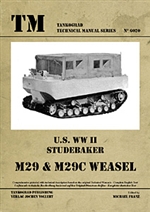
Technical Manual Special No. 20: U.S. WWII M29 and M29C Weasel (SC) - Tankograd - TP6020
List Price: $19.98
Our Price: $17.96
Stock Status:(Out of Stock)
Product Code: TP6020
Franz. Covers the light cargo carrier T15/M28, cargo carrier T24/M29/M29C and postwar developments. Features excerpts of technical manuals, wartime photos, photos of restored vehicles - ideal companion for modelers and fans of technology. Complete background history and variants. Illustrated with more than 150 images, among them WWII action photos, color photos and technical drawings. Complete English and German text; 48 pages.
Recons & Raids in Force: No More Farces
 slideshare.net/1st_TSG_Airborne/usaf-dragoneye
slideshare.net/1st_TSG_Airborne/usaf-dragoneye
slideshare.net/1st_TSG_Airborne/usaf-dragoneye-2
slideshare.net/1st_TSG_Airborne/m113-gavin-flexibility
If western nation-states are truly threatened by SNC "terra-ist" groups--and not just their own intel-sabotage agencies concocting bogeymen to increase their budgets and power--then it behooves them to have a REAL recon/raid-in-force capability based on MOBs nearby world trouble spots and not on land bases where our presence is sure to enrage the locals into rebellion. Aircraft can neither find hidden enemies camouflaged and burrowed deep underground nor strike enemies with 100% certainty to deny them launching a nuclear ballistic missile into a population center.
 youtube.com/view_play_list?p=2808DB9FF945FBF3
youtube.com/view_play_list?p=2808DB9FF945FBF3
We need James Bond.
And James Bond does recon-in-force.
James Bond is For Real.